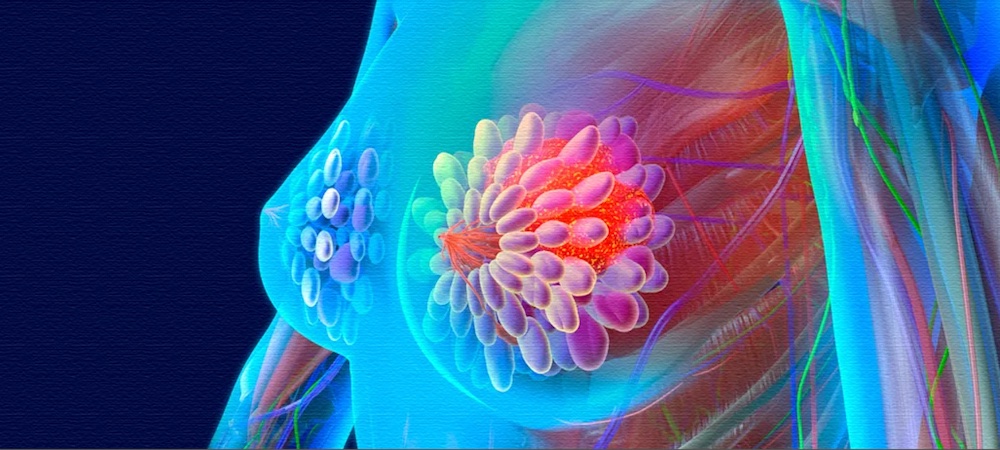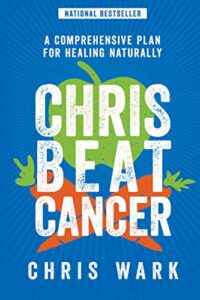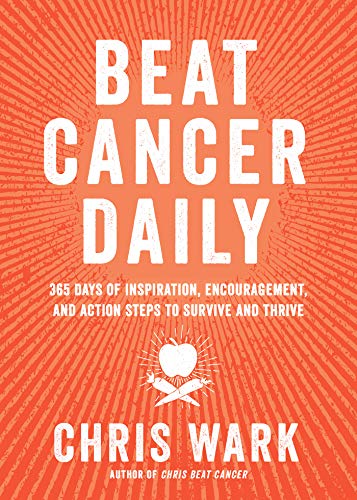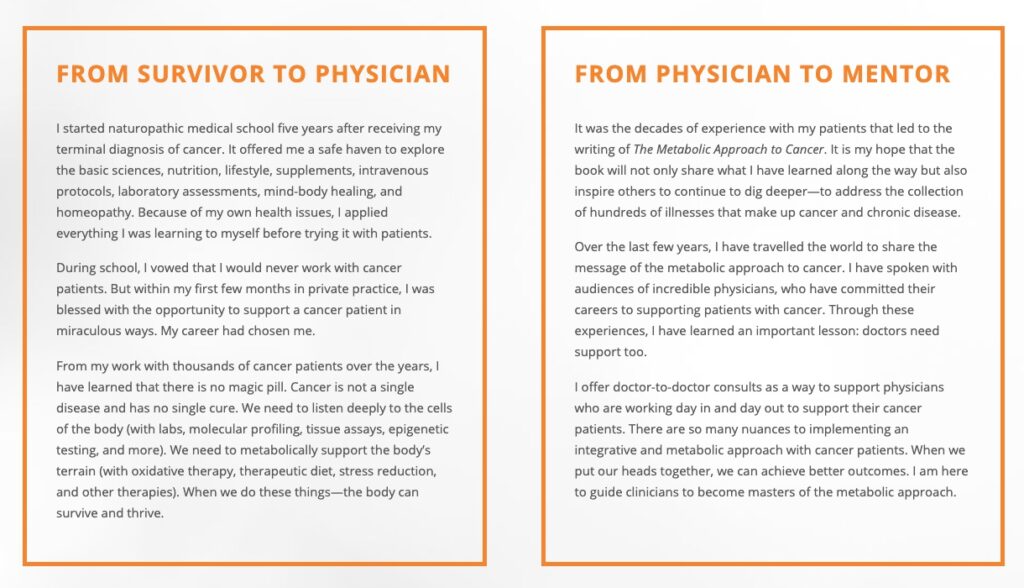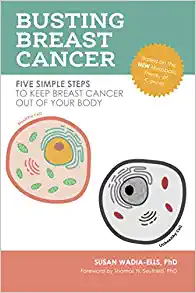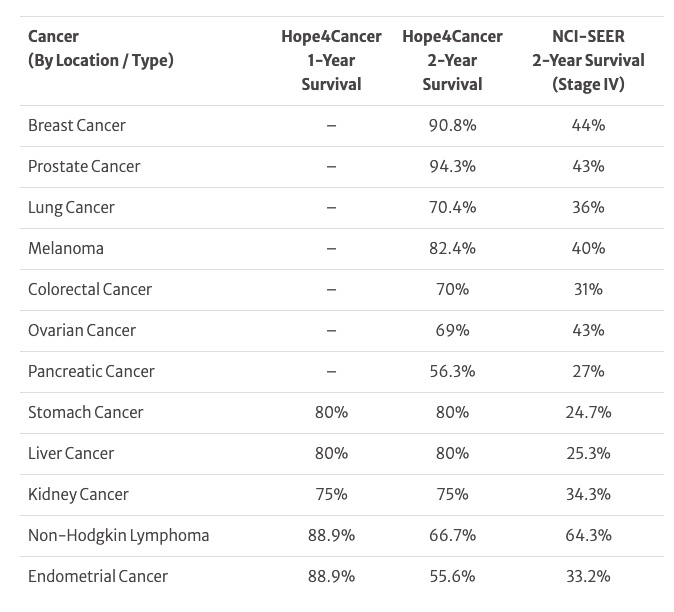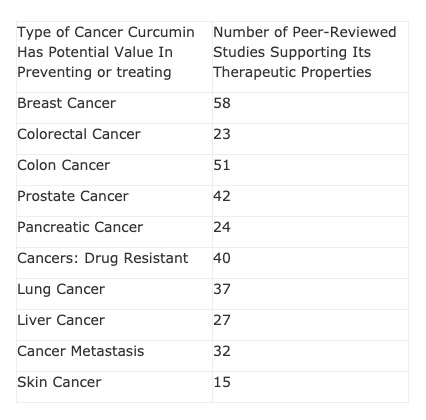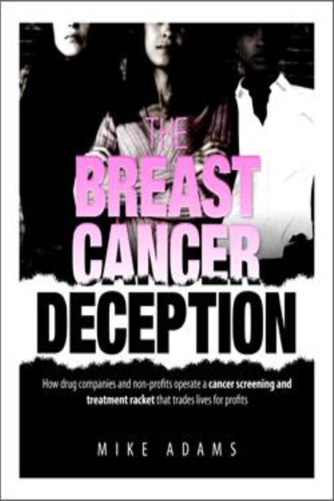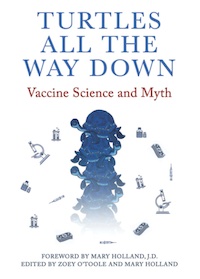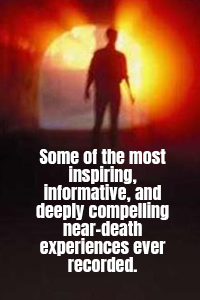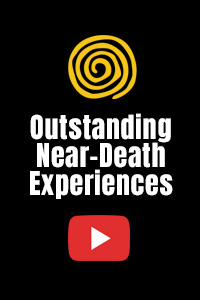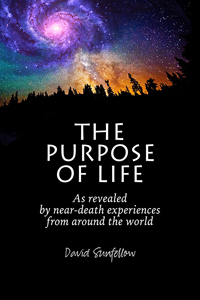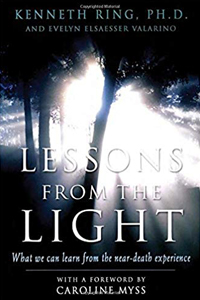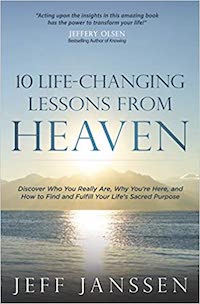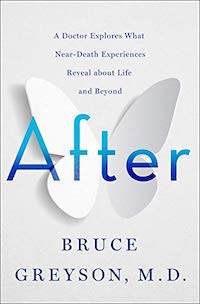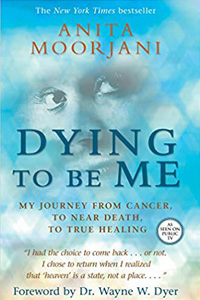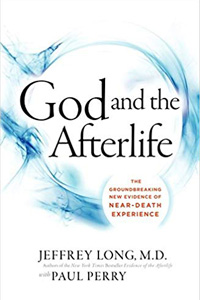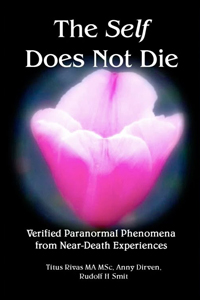……………….
See Also:
Sunfellow Health & Healing Resource Page
……………….
Articles & Information Included On This Resource Page
• Quotes
• Dr. Kathleen Ruddy: The Surprising Potential Of Ivermectin Against Cancer
• Dr. William Makis: Best Ways To Treat Cancer, Turbo Cancer & Detox From COVID Vaccines!
• Dr. William Makis: Using Ivermectin To Heal Cancer, Including COVID-Vaccine-Induced Turbo Cancer
• Chris Beat Cancer (Chris Wark)
• What To Do If You’re Diagnosed With Breast Cancer?
• Key Recommendations From Dr. Mercola’s Article
• LifeWorks Wellness Center
• The Metabolic Approach To Cancer With Dr. Nasha Winters
• Excerpts From “The Metabolic Approach To Cancer Treatment”
• Busting Breast Cancer: Five Simple Steps To Keep Breast Cancer Out Of Your Body (Book)
• Hope4Cancer
• Breast Cancer & Unnecessary Treatment
• Chemo & Radiation Can Make Cancer More Malignant
• Bras Cause More Than Breast Cancer: Preliminary Results Of The International Bra-Free Study
• Sunlight Holds Key To Killing Breast Cancer
• Andrew Saul – High Dose Vitamin C Therapy For Major Diseases
• Study: Many Breast Tumors Will Spontaneously Regress
• When Cancer Spontaneously Disappears
• Is Cancer An Ancient Survival Program Unmasked?
• 32 Ways To OutSmart Cancer
• Breast Cancer Deception
• Additional Holistic Treatment Articles & Resources
……………….
Quotes
“Importantly, once you’ve done chemo or extensive radiation, your chances of remission through alternative methods are slim, as the damage done is too great. I’ve yet to talk to an expert in alternative cancer treatments that does not agree with this statement. In order for holistic treatment to work, it needs to be done first. This in turn means you have to be brave enough, and not too panic stricken, to explore your options and give them time to work before jumping into the ‘cut, poison, burn’ paradigm.”
— Dr. Joseph Mercola
…
“Standard operating procedures is to write off the patients death as being ’caused’ by an ‘exceptionally aggressive’ form of cancer, rather than to admit that the very treatments may have transformed a relatively slow growing tumor into a rapidly proliferating and invasive one.”
— Sayer Ji, GreenMedInfo
…
“We are discovering the many ways tight bras harm health, including every part of the body. As you will see, bras cause more than breast disease . . . When cultural influences from industry and social practices bias human behavior and cause disease, the resulting disease can be called ‘culturogenic’. Breast cancer is mostly a culturogenic disease, with a small (less than 10%) genetic component, and a large cultural-environmental component. These non-genetic causes of breast cancer include exposure to environmental carcinogens and x-rays (including mammograms), along with direct inhibition of the breast lymphatic system by tight bra usage.”
— Sydney Ross Singer, author of Dressed to Kill: The Link Between Breast Cancer and Bras
…
“Bra-free women have about the same risk of breast cancer as men, while the tighter and longer the bra is worn the higher the risk rises, to 125 times higher for a 24/7 bra user compared to a bra-free woman.”
— Sydney Ross Singer, author of Dressed to Kill: The Link Between Breast Cancer and Bras
…
“Before you heal someone, ask him if he’s willing to give up the things that make him sick.”
— Hippocrates
……………..
Dr. Kathleen Ruddy: The Surprising Potential Of Ivermectin Against Cancer (American Thought Leaders)
……………..
Dr. William Makis: Best Ways To Treat Cancer, Turbo Cancer & Detox From COVID Vaccines!
Dr. William Makis: Learn More About Prolonged Water Fasting
………………
Dr. William Makis: Using Ivermectin To Heal Cancer, Including COVID-Vaccine-Induced Turbo Cancer
………………
Chris Beat Cancer Book Trailer
……………………
Chris Beat Cancer: A Comprehensive Plan for Healing Naturally
By Chris Wark
Amazon Description:
Two days before Christmas and at 26 years old, Chris Wark was diagnosed with stage 3 colon cancer. He had surgery to remove a golf ball-sized tumor and a third of his colon. But after surgery, instead of the traditional chemotherapy, Wark decided to radically change his diet and lifestyle in order to promote health and healing in his body. In Chris Beat Cancer, Wark describes his healing journey, exposes the corruption and ineffectiveness of the medical and cancer industries, and shares the strategies that he and many others have used to heal cancer. These strategies include adopting the Beat Cancer Mindset; radical diet and lifestyle changes; and mental, emotional, and spiritual healing, as well as advanced integrative therapies. Dually packed with an emotional punch and extensive healing solutions, Chris Beat Cancer will inspire and guide you on your own journey toward wellness.
• Chris Beat Cancer Website
• The SQUARE ONE Healing Cancer Coaching Program
• Chris Beat Cancer Survivor Stories
• 20 Questions For Your Oncologist (pdf)
• Why I Didn’t Do Chemo
• Chris Beat Cancer Interviews
• Chris Beat Cancer On YouTube
• Chris Beat Cancer On Twitter
Beat Cancer Daily: 365 Days Of Inspiration, Encouragement, And Action Steps To Survive And Thrive
Amazon Description:
A healing mindset takes fortitude, faith, and courage — and acceptance of support when you need it most. As the survivor of cancer for over 15 years, Chris Wark, best-selling author of Chris Beat Cancer, knows the daily struggles involved in healing from cancer and wants to support you as you walk this path with God. This daily devotional offers nuggets of scripture, inspiration, encouragement, and actions for surviving life’s difficult storms. Embrace the challenge and know that you have the divine guidance and power to prosper — mentally, physically, emotionally, and spiritually. Your future will be better than your past, better than you can even imagine.
…………………
Chris Wark – Square One Program – Module 1: First Things First
…………………
Hodgkin’s Lymphoma Healed: 10 Year Follow Up With Cortney Campbell
Introductory article, including links to books, websites, and additional outstanding resources
…………………
What To Do If You’re Diagnosed With Breast Cancer?
Dr. Joseph Mercola
Backup Link (Thanks to COVID-19 censorship, the original article is no longer available. Ditto for many of the interviews and information referenced in this article.)
What To Do If You’re Diagnosed With Breast Cancer
Approximately 1,663 people will die today from cancer in the United States. This is criminal since cancer is a relatively new disease and would rarely occur if you were healthy. The time to use natural medicine, ideally, is before you are diagnosed, but certainly when you are diagnosed.
If you are motivated by fear and run to conventional physicians, they implement therapies like chemo and radiation that will compromise your immune system, which ultimately is responsible for controlling the cancer. Even if they are successful, these approaches will typically kill you from another disease a few years later.
An estimated 1,762,450 Americans are expected to be diagnosed with cancer in 2019. The mere words, “You have cancer” is a traumatic blow that can paralyze even the most resilient among us. Panic can easily set in, which has its own ramifications for health and well-being.
Interestingly, most say they thought they were healthy up until they received their cancer diagnosis. However, common sense will tell you that’s impossible. Cancer, like many other diseases, does not manifest until you’re about 80% of the way down the proverbial hole.
Most cancers take years, and some even decades, to progress to the point of being diagnosable. As noted by Dr. Nasha Winters, a naturopathic physician who specializes in cancer treatment, cancer is a res ipsa loquitur factor, meaning “the facts speak for themselves.”
In other words, you, in some way, were not leading a healthy lifestyle — or you simply failed to counteract the inevitable toxic exposures we’re all subject to in today’s modern world.
Proactive Measures Can Pay Dividends
 Unfortunately, conventional medicine pays little attention to actual prevention of cancer, and few doctors are properly trained in evaluating lab tests that can provide early indications that a problem is brewing, even though such tests are readily available.
Unfortunately, conventional medicine pays little attention to actual prevention of cancer, and few doctors are properly trained in evaluating lab tests that can provide early indications that a problem is brewing, even though such tests are readily available.
In The Metabolic Approach to Cancer Treatment, Winters reviews several oft-ignored lab tests that can give you a nice overview of how your immune system is doing, and whether you might be at risk for cancer or other chronic disease.
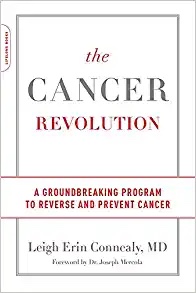 Dr. Leigh Erin Connealy also covers this important topic in The Cancer Revolution: A Groundbreaking Program to Reverse and Prevent Cancer, which is also the title of her book.
Dr. Leigh Erin Connealy also covers this important topic in The Cancer Revolution: A Groundbreaking Program to Reverse and Prevent Cancer, which is also the title of her book.
Even if you believe yourself to be in decent health, finding a doctor who can help you assess your risk and provide guidance on how to optimize your health would be an ideal scenario. But what do you do if you’ve already been diagnosed with cancer? That’s the focus of this particular article, although most of the recommendations apply equally to both prevention and treatment.
Addressing Your Emotions
Getting a cancer diagnosis is bound to throw anyone for a loop. Having tools to effectively address the emotional trauma is an important first step. One of my favorite tools for this is the Emotional Freedom Techniques (EFT).
It’s noninvasive and easy to learn, and can be done just about anywhere, at any time. In the video above, Julie Schiffman demonstrates how to tap for the emotional (and physical) stress associated with a breast cancer diagnosis.
When faced with a cancer diagnosis, it’s easy to panic and lose sight of the big picture. Most people immediately start on conventional treatment, which typically involves chemotherapy, radiation and/or surgery.
Centering yourself with EFT, meditation or any other form of stress relief that you find effective may help you calm down enough that you might consider your alternatives. Most are indoctrinated to think chemo, radiation and surgery are “givens,” when in fact there are now many different kinds of alternatives.
Importantly, once you’ve done chemo or extensive radiation, your chances of remission through alternative methods are slim, as the damage done is too great. I’ve yet to talk to an expert in alternative cancer treatments that does not agree with this statement.
In order for holistic treatment to work, it needs to be done first. This in turn means you have to be brave enough, and not too panic stricken, to explore your options and give them time to work before jumping into the “cut, poison, burn” paradigm.
You may also find inspiration from Kate Bowler’s podcast, “Everything Happens.” Bowler, a cancer survivor, interviews a wide range of individuals, talking to them about “what they’ve learned in dark times.” Some discussions center around loss and grief, while others tackle living with chronic illness.
Finding Your Way
So, just what are your options? I’ve written many articles and interviewed many alternative cancer specialists on this very issue. One way to get started is to find a qualified expert that can help guide you through the options.
Winters, for example, is a naturopathic physician who specializes in consulting with clinicians who treat cancer patients (see below for more information). To engage her services, your doctor will need to go to the doctor section on her website, drnasha.com, to sign up for a consultation. There you can also find a free guide describing the five steps Winters recommends taking when diagnosed with cancer.
Hope4Cancer, which has integrative cancer treatment centers in Mexico, Colombia and Thailand, also offers consultations, and will discuss treatment options with your oncologist if desired.
You can learn more about these facilities in my interview with Hope4Cancer’s founder, Dr. Antonio Jimenez. Educational material can be found on Hope4Cancer.com, including a printable PDF summarizing the seven key principles of cancer therapy that Hope4Cancer is founded on.
A third helpful resource where you can find oncologists who are open to holistic and integrative cancer treatments is the Best Answer for Cancer Foundation. It’s a hybrid nonprofit that services both integrative physicians and patients with cancer and other chronic disease.
Nutritional Basics
As you might expect, your diet not only can help prevent cancer from developing in the first place, but is also an important piece of the treatment puzzle. Overwhelmingly, the nutritional approach with the strongest scientific support is time-restricted eating, which is restricting your eating window to six to eight hours initially, and eventually down to four hours.
This will help increase metabolic autophagy, lower your insulin resistance, improve your sleep, radically increase your metabolic flexibility, increase ketones, and improve your mitochondrial function — especially if you add exercise in your fasting window.
In my experience, the vast majority of people are adapted to burning carbs as their primary fuel, as opposed to burning fat. One of the most effective strategies I know of to become a fat burner is to fast for 16 to 18 hours each day.
Remember, cancer is a metabolic disease rooted in mitochondrial dysfunction. In a nutshell, cancer cells burn glucose, which generates far more reactive oxygen species than fat and ketones. To burn fat, the cell must be healthy and normal. Cancer cells cannot burn fat, so a high-fat, low-sugar diet essentially starves the cancer while nourishing healthy cells.
To be clear, time-restricted eating and a ketogenic diet can safely and easily be implemented even if you’re going through conventional cancer treatment. In fact, it can actually make chemotherapy more effective.
The ChemoThermia Oncology Center in Turkey, for example, specializes in low-dose chemotherapy treatments for late-stage cancers, which are in large part made possible through the implementation of a ketogenic diet.
You can learn more about their general treatment protocol in Metabolically Supported Therapies for the Improvement of Cancer Treatment. Other strategies used at this cancer center include fasting, hyperthermia and hyperbaric oxygen therapy.
Why Nutritional Ketosis Is So Important
One of the leading researchers in this field is Thomas Seyfried, Ph.D. In my May 2019 interview with Seyfried, he explains how the origin of cancer is damage to the respiratory function of your mitochondria, triggering compensatory fermentation that is run by oncogenes.
To survive, the cancer cells must use fermentation, and the two most available fermentable fuels in the cancer microenvironment are glucose and glutamine (one of the most common amino acids found in proteins).
For this reason, targeting glucose and glutamine is a crucial component of cancer treatment. The simplest approach is to bring the patient into therapeutic ketosis, and then strategically target the availability of glucose and glutamine.
Seyfried’s research also sheds much-needed light on how metastatic cancer works, and thus its treatment. According to Seyfried, a metastatic cancer cell is essentially a hybrid mix of a macrophage (an immune system cell) and a dysregulated stem cell.
Macrophages are part of our primary defense system against bacterial infections. They live both in the bloodstream and in tissues, and can go anywhere in the body. When an injury or infection occurs, they immediately move in to protect the tissue.
In the case of metastatic cancer cells, their dysregulated energy and function make them proliferate out of control, spreading unpredictably through the body. Like normal macrophages, metastatic cancer cells are also able to survive in hypoxic environments, which is why most angiogenic therapies are ineffective against metastatic cancer. Seyfried’s research suggests that by strategically targeting glutamine, you can effectively kill these metastatic cancer cells.
Hyperbaric Oxygen Therapy And Cryotherapy
Another component that we’re starting to see more and more of in holistic cancer treatment programs is the addition of hyperbaric oxygen therapy. As mentioned, it’s one of the adjunct therapies used at The ChemoThermia Oncology Center in Turkey.
In 2015, Seyfried and Dominic D’Agostino, Ph.D., another cancer-is-metabolic-disease researcher, published a paper demonstrating a phenomenal synergy between a ketogenic diet and the use of hyperbaric oxygen for metastasized cancers.
Another oft-ignored alternative discussed in Connealy’s book, The Cancer Revolution: A Groundbreaking Program to Reverse and Prevent Cancer, is cryotherapy, which is where you freeze the cancer cells. Cryotherapy typically works well for breast cancer.
In our interview, Connealy recounts treating 9-centimeter breast tumors with cryotherapy in combination with a cocktail of low-dose chemo and hypodermic mistletoe, successfully eliminating the tumor in a single month.
Vitamin D Optimization Is Essential
Optimizing your vitamin D is another foundational move that you should consider regardless of the type of cancer treatment you’re opting for. Research shows most cancers occur in people with a vitamin D blood level between 10 and 40 nanograms per milliliter (ng/mL), and the optimal level for cancer protection has been identified as being between 60 and 80 ng/mL.
Generally speaking, research has shown that once you reach a minimum serum vitamin D level of 40 ng/mL, your risk for cancer diminishes by 67%, compared to having a level of 20 ng/ml or less. Several studies also show that higher vitamin D levels are protective against breast cancer specifically.
A 2005 study showed women with vitamin D levels above 60 ng/mL have an 83% lower risk of breast cancer than those below 20 ng/mL. I cannot think of any other strategy that can offer that kind of risk reduction.
A pooled analysis published in June 2018 of two randomized trials and a prospective cohort study came to a near-identical conclusion. Mirroring the 2005 findings, women with vitamin D levels at or above 60 ng/mL had an 82% lower incidence rate of breast cancer than those with levels of 20 ng/mL or less.
Vitamin D also increases your chances of surviving cancer, and evidence suggests adding vitamin D to the conventional treatment for cancer can boost the effectiveness of conventional cancer treatment.
GrassrootsHealth makes testing easy by offering an inexpensive vitamin D testing kit as part of its consumer-sponsored research. You also have the option of getting both your vitamin D and omega-3 index tested.
By signing up, you are helping further vital health research that can help millions in coming years. (All revenues from these kits go directly to GrassrootsHealth. I make no profit from these kits and only provide them as a service of convenience to my readers.)
All women are also encouraged to enroll in the Breast Cancer Prevention project, to track your vitamin D level and help prevent an initial cancer occurrence, or, if you’ve already had it, to help prevent a recurrence.
Other Cancer Treatment Recommendations
As discussed in Metabolically Supported Therapies for the Improvement of Cancer Treatment, clinical evidence from the ChemoThermia Oncology Center in Turkey shows nutritional ketosis and fasting can radically improve treatment outcomes and minimize the need for chemotherapy, even in advanced-stage and hard to treat cancer cases.
Other strategies, aside from those already discussed, that can help minimize your cancer risk and improve your outcome if added to a comprehensive cancer treatment plan include the following:
• Sauna – Detoxification is another crucial component. Most of us are inundated with thousands of toxins each day, many of which have carcinogenic potential. One of the simplest and perhaps safest ways is to use a low-EMF, infrared sauna coupled with a near-infrared light, as your skin is a major organ of elimination. Cancer cells also have a harder time surviving in high temperatures. I strongly believe that near-infrared, not far-infrared, saunas are the best out there and highly recommend the sauna space sauna.
• Exercise – One of the primary reasons exercise works is that it drives insulin resistance down. One of the most recent studies looking at exercise for cancer was published online August 5, 2019. It found that women who exercised and lost weight had more favorable breast cancer biomarker profiles than those who exercised but lost no weight.
• Minimize your exposure to electromagnetic fields (EMF), including both wireless technologies and household wiring. To learn more about how EMFs affect your health, see “The Harmful Effects of EMFs Explained.”
• Get eight hours of high-quality sleep each night to optimize your melatonin production. Melatonin (a hormone with antioxidant and anticancer activity) both inhibits the proliferation of cancer cells and triggers cancer cell apoptosis (self-destruction). It also interferes with the new blood supply tumors required for their rapid growth (angiogenesis).
• Reduce your exposure to environmental toxins like pesticides, household chemical cleaners, synthetic air fresheners and air pollution.
• Boil, poach or steam your foods, rather than frying or charbroiling them to avoid the creation of acrylamide, a known carcinogen. Avoid all processed meats for the same reason…
…………………
Key Recommendations From The Above Article:
• EFT Centering, Meditation, Other Stress Relief Techniques
• Time-Restricted Eating (Intermittent Fasting)
• Ketogenic Diet
• Hyperbaric Oxygen Therapy
• Cryotherapy
• Vitamin D
• Sauna
• Exercise
• Minimize EMF Exposure
• Get eight hours of high-quality sleep
• Reduce exposure to environmental toxins like pesticides, household chemical cleaners, synthetic air fresheners, air pollution
• Boil, poach or steam foods, rather than frying or charbroiling them
• Avoid all processed meats
…………………
LifeWorks Wellness Center
• LifeWorks Wellness Center – Alternative Cancer Treatment
• LifeWorks Wellness Center – Breast Health Issues
…………………
The Metabolic Approach To Cancer With Dr. Nasha Winters
Cancer will take root in half of all men and one-third of all women in their lifetime.
At the age of 19, Dr. Winters was diagnosed with end-stage ovarian cancer and given 3-6 months to live. Crippled with pain, nausea, infections, malnourishment, and muscle wasting, she was uninsured and out of options. But she was also young, naïve, and stubborn. It was up to her to dig deep and find hope. The diagnosis of terminal cancer suddenly shook her awake. The 27 years since that diagnosis have unfolded as a journey that she continues to this day. What began as a pursuit to heal her body has evolved into a global mission to transform cancer care.
An Alternative Perspective On Treating Cancer
 The Metabolic Approach to Cancer starts out by setting the stage, reminding us that cancer directly affects almost half the US population, and by the end of each and every day, approximately 1,600 cancer patients die. It then explores the two conflicting points of view on treating cancer: conventional versus holistic treatment. But the crux of the book, and Winters’ perspective, is best summed up by this Hippocrates quote, referenced in the book:
The Metabolic Approach to Cancer starts out by setting the stage, reminding us that cancer directly affects almost half the US population, and by the end of each and every day, approximately 1,600 cancer patients die. It then explores the two conflicting points of view on treating cancer: conventional versus holistic treatment. But the crux of the book, and Winters’ perspective, is best summed up by this Hippocrates quote, referenced in the book:
“Illnesses do not come upon us out of the blue. They are developed from small daily sins against Nature. When enough sins have accumulated, illnesses will suddenly appear.”
Dr. Winters considers the body as one interrelated, integrated system and believes cancer comes from the body being neglected at some level via nourishment, physical stress, psychological stress, or a combination of those stressors.
Western medicine treats cancer once it’s already within a body (chemo, surgery, radiation). Despite years and billions of dollars invested in quests for cures, very little progress has been made. In fact, cancer is on the rise. Dr. Winters believes cancer is not a single “thing” but instead a cumulation of many issues that lead to the formation of cancer in the body. Thus, she believes in treating the body as a whole, identifying and addressing the physiological and emotional elements (think stress, diet, and pre-existing medical conditions) that require balance and optimization in order to halt or even prevent the cancer process. She calls this protocol The Terrain Ten.
The Metabolic Approach to Cancer is a thought-provoking book that helps you understand why cancer and its treatment are not a one-size-fits-all, not to mention how lifestyle choices play an integral part in our health and sickness. It emphasizes how to lead a healthy lifestyle and arm your body with the tools it needs to avoid or fight off illness, rather than just suffer from it.
…………………
Excerpts From “The Metabolic Approach To Cancer Treatment”
The Metabolic Approach to Cancer: Integrating Deep Nutrition, the Ketogenic Diet, and Nontoxic Bio-Individualized Therapies
By Dr. Nasha Winters and Jess Higgins Kelley
Excerpts:
“What we discovered, counter-intuitively, is that when you start killing a cancer cell, one of the things it does in order to survive is to spread even further.”
— DR. Patrick Soon-Shiong, Page 13
…
“A 2006 University of California, Los Angeles (UCLA), study found that chemotherapy causes changes to the brain’s metabolism and blood flow that can linger at least ten years after treatment (a phenomenon many refer to as ‘chemo brain’). If cancer patients patients can survive conventional oncology’s antiquated and largely ineffective treatments, they are far more likely to die earlier and with a lower quality of life.
“Leading cancer treatments such as chemotherapy and radiation are, in fact, carcinogenic, meaning they actually cause cancer. Indeed, several cancer drugs including tamoxifen, used to treat breast cancer, are classified by the International Agency for Research on Cancer (IARC) as Group 1 carcinogens—meaning carcinogenic in humans. So is radiation. Yet when you or the person next to you is diagnosed with cancer, then surgery, radiation, or chemotherapy, or a combination of these, will be your primary treatment options. These modalities will, in words used by those in the oncology field, ‘slash, burn, and poison’ cancer cells in hopes of killing them. (Early chemotherapies were actually derived from mustard gas, a chemical agent of war.) The trouble is that these conventional treatments also slash, burn, and poison a body’s healthy cells. Not only that, but they further deplete the immune system, damage DNA, eradicate critical microbes in the gut, cause inflammation and oxidative stress—all of which are cancer-promoting factors (each of which we will discuss further in this book).”
— Pages 14, 15
…
“If someone does not already have an autoimmune condition before cancer, they will usually get one after conventional treatment, as these therapies strongly override, suppress, or overstimulate the immune system.”
— Page 15
…
“The long-term implications of these therapies can include increased gut permeability, impaired cardiovascular health, depressed cognitive health and neurological function, debilitating neuropathy, destruction of the immune system, and even death. But there is a stunningly effective cancer treatment available right at the grocery store: food.”
— Page 15
…
“We’ve seen or experienced the devastating physical side effects from conventional, chemical-based, and targeted treatments. Many of us have incurred significant emotional and financial costs, without success. For the last seventy-five years, the ‘War on Cancer’ has been laser-focused on developing targeted therapies and mapping the human genome for genetic clues to cancer. But the magic bullet scientists have been searching for has remained elusive, leaving a trail of failed and highly toxic therapies. Still, 95 percent of cancer spending is allocated to genetic research while prevention accounts for only about 5 percent of spending. Five percent! Truly the Western way: Treat the disease, not the cause. Even worse, our prevention model is centered on drugs (think aspirin), vaccinations, and radiation-based screening methods including mammograms, which are also a risk factor for cancer.”
— Page 18
…
“We are up against a lot of misinformation out there, and an utter lack of support in the conventional oncology world with regard to nutrition. In fact, typically when a newly diagnosed cancer patient asks their conventional oncologist what they should eat to help support their health, the response is: ‘It doesn’t matter, eat what you want; just don’t lose weight.’ Know this: Less than 25 percent of all medical schools offer a course in nutrition, and most of these are elective. Your medical doctor likely has little understanding of basic nutrition, never mind deep or integrative nutrition, and is therefore simply not qualified to offer advice on the topic. And it’s not just medical doctors, either; there is a contingent of naturopathic physicians who are not up to speed in nutritional biochemistry.”
— Page 20
…
“The nutrition recommendations of the American Cancer Society (ACS) are formulated by registered dietitians trained in the food pyramid (read: Big Agriculture) model. Their corporate sponsors are the American Dairy Association, Abbott Nutrition (maker of seasonal vaccines and ibuprofen), and PepsiCo. The “quick and easy” snacks they recommend to people undergoing cancer treatment include angel food cake, cookies, doughnuts, ice cream, and microwavable snacks. (We are not kidding; visit their website and see for yourself.)”
— Page 20
…
“Dr. Nasha has been studying and using this very different — and very effective — approach for cancer prevention and neutralization for over twenty-five years. Her approach strays significantly from conventional oncology, and has been saving lives for many years, including her own. Dr. Nasha’s personal cancer experience began over twenty years ago when a diagnosis of stage IV ovarian cancer veered her away from pursuing a conventional medical degree and toward the study of naturopathic medicine. To treat her own cancer she used an integrative approach fortified by a traditional whole food diet and environmental adaptations. Using ‘alternative medicine’ is the reason Dr. Nasha not only remains a cancer thriver today, but is healthier and more vital than before her cancer diagnosis. This personal experience helped form the foundation of her naturopathic oncology practice, which in turn has helped thousands of other patients do what she did: not only overcome cancer but become healthier than before.”
— Page 23
…
“We must optimize the body’s healing mechanisms instead of waging war on them. We need to treat the terrain, not the tumor. We must build the body up instead of attacking it. Our strategy works: The only side effect of the metabolic approach is feeling better. Much better. In fact, for over a decade Dr. Nasha has seen hundreds of stage IV cancer patients who have lived far beyond their “expiration date” because they have followed this model.”
— Page 24
…
“While there are many cancer diets out there, we debunk several — vegetarian, vegan, acid-alkaline, and the Budwig Diet, to name a few — within this book. Certainly the intentions behind these diets are commendable, but each is fundamentally flawed, and we will explain how. While certain foods can act as powerful anticancer agents, other foods can be cancer’s strongest ally. This book teaches you the difference between the two.”
— Page 25
…
“Deep nutrition, a metabolic approach, is the answer to cancer. And where Western medicine is trying to isolate the active forms of food to create synthetic versions able to be patented, we recommend the whole foods and dietary practices, such as fasting, that have sustained us for millennia. Yes, not eating is powerful medicine. All foods contain more than one active ingredient, and we strongly believe in the therapeutic power of synergies.
“When sugar, processed grains, soda, preservatives, additives, trans fats, synthetic oils, pesticides, herbicides, genetically modified corn and soy, and junk food are replaced with organic, wild, and fermented vegetables, bone marrow and organ meats, healthy fats, specific herbs, and adequate hydration, the terrain shifts in a matter of days. We’ve seen it happen — and tested it — hundreds of times during our multiday cancer retreats over the years. Epigenetic markers change, blood sugar levels decline, immune systems are fortified, hormones balance, digestion improves, toxins are removed, and fogs of depression are lifted.”
— Page 27
…
“The most important finding is that fatty acids (dietary fats) cannot be fermented by cancer cells, which makes a ketogenic diet the most powerful dietary approach to cancer identified to date. And thanks to more than a hundred years of research by the physicians and scientists Otto Warburg, Thomas Seyfried, Dominic D’Agostino, and Valter D. Longo, as well as a rising number of others, we know beyond a shadow of a doubt that low-glycemic, ketogenic diets and intermittent fasting should be an integral part of an effective anticancer diet program.”
— Page 28
…
“Conventional medicine . . . allows the patient to be passive—the doctor performs surgery or administers chemotherapy, and the patient just waits for the test results. In the conventional model the healing, and ultimately the trust, lie with the doctor. We believe, however, and have seen over and over in our practices, that true healing occurs when the patient is an active participant in the healing process. Our process is for those who are motivated to take charge of their health and willing to make lifestyle changes. It’s about getting to know yourself, and maybe changing things you never thought possible. It’s about asking questions, and not shying away from answers. It’s about undoing the notion that you are a victim of cancer and you have no control over the process. Because you do.”
— Page 28
…
— Page 42
…
“Now that you have an idea about the elements of your terrain that might be promoting a cancer process, it is time to plan how you want to make a change. Remember, you are in the driver’s seat of your health care plan. The real urgency of cancer lies in the shock of diagnosis; while cancer-related medical emergencies do occur, they are quite rare. In most cases (even when given a poor prognosis) you have time to explore your terrain and choose how best to approach treatment and how to support your body every step of the way.
“We understand that it can be hard to trust oneself in the face of a scary diagnosis, especially since patients are often swept into their personal war against cancer at an alarming speed. Doctors can use language that makes it sound as though treatments must happen immediately and that to refuse is a death sentence. Add to that the overwhelming amount of information found on the internet and suggestions from well-meaning family and friends and it can all result in major stress and confusion. Most people diagnosed with cancer will go through the full seven stages of grief—starting with shock or disbelief, then denial, bargaining, guilt, anger, depression, finally arriving at acceptance and hope. Our best advice is to slow down, breathe, read this book, trust yourself, and hurry to hopefulness!
“Cancer is most often a marathon, so you’ll need to pace yourself. Maybe it’s time to take that vacation you’ve always wanted, or spend more time doing the things you love. We’ve seen it hundreds of times, where cancer ends up being the best teacher and the best journey a person experiences in their lifetime. And remember, no matter what your diagnosis is, cancer is not a death sentence, so never believe them if a doctor gives you an expected amount of time to live. Miracles happen every day, so never lose hope.”
— Pages 42, 23
…………………
Busting Breast Cancer: Five Simple Steps To Keep Breast Cancer Out Of Your Body
By Susan Wadia-Ells PhD
Amazon Description:
Avoid mammograms. Switch off birth control drugs — and progestin menopausal drugs, too. Lose your excess fat NOW! Stop holding onto those highly stressful jobs and relationships.
Counterintuitive as these may seem, each is among Busting Breast Cancer’s Five Simple Steps, documented to effectively prevent breast cancer, thanks to recent developments in our metabolic understanding of cancer. Each reduces your risk of breast cancer by 30 to 80 percent!
Dr. Susan Wadia-Ells’ shocking new book questions the presumed wisdom of most so-called authorities: National Academy of Medicine, American Cancer Society, Susan G. Komen, and mainstream cancer centers. And why wouldn’t we question their wisdom? At least 30 percent of women treated for early-stage breast cancer go on to develop metastatic breast cancer-practically guaranteeing their early death. Physicians must report each recurrence to state registries. But you may be surprised to learn the industry and its federal partners keep these numbers hidden. Perhaps they’re just too embarrassing to share.
Dr. Wadia-Ells does not pussyfoot around. A journalist with graduate degrees in political economy and women’s studies, she aims to change US culture on women’s behalf. Reviewing thousands of studies while researching this book, she discovered the 2012 landmark text, Cancer as a Metabolic Disease, by Boston College biologist Thomas N. Seyfried, PhD who lays out the complete biological explanation of how a person’s first cancer cell develops. Effective prevention is now possible! Take off the pink ribbons. Stop running for the cure. Keep vitamin D3 above 60 ng/ml. Get rid of the carbs. Practice meditation. Stop suffocating your breast cells’ “batteries” — your fragile mitochondria. Take charge; stop that first breast cancer cell before it’s ever born.
Busting Breast Cancer also proposes political actions: demand the FDA allow affordable $30 hormone-free IUDs; promote breast self-exams; mandate equal insurance coverage for ultrasound screenings and early-prevention thermography. Against a multibillion-dollar industry with too much financial incentive to abandon its failing direction, who can change the course of breast cancer prevention and treatment? YOU can! Only women have the self-interest to do it. And now, with Busting Breast Cancer, you’ll have the knowledge, too. Over 900 citations; advance praise from the growing worldwide metabolic oncology community, the DCIS 411 blog, breast cancer survivors and the functional medicine community.
Written by an investigative journalist for the general public.
…………………
Hope4Cancer
…………………
Comparison of Data by Cancer Site/Type
The following table compares our 1- or 2-year survival rates with 1- or 2-year survival data extracted from the NCI-SEER database for specific cancer types. In all cases, our survival data compares well with the NCI-SEER data. Please note that for some cancer type categories, the number of patients treated was small, so may not provide a statistical representation.
What if my cancer is not listed? Please read the Frequently Asked Questions section below for your answer.
Table 1. Comparison of 1- and 2-year survival rates at Hope4Cancer with 2-year survival rates for Stage IV patients from the NCI-SEER database for selected cancer types.
Quality of Life (QOL) Statistics
Many cancer patients are known to quit their treatments because of changes in their quality of life (QOL). In a study that included 464 lymph-node positive breast cancer patients, on a multiple chemotherapy protocol consisting of five drugs, scientists from the CDC and Harvard University showed that discontinuation of treatment was strongly correlated with a decline in quality of life. Studies on tamoxifen have reported early discontinuations ranging from 15 – 50% of patients taking the drug because of the combined side effects.
Our clinical experience has shown that most Hope4Cancer patients demonstrate a visibly improved quality of life after their treatment visit, which we attribute to the use of non-toxic, integrative therapies.
To quantify this observation, we conducted a quality of life assessment study using a standardized survey tool on 223 randomly selected patients with different cancer diagnoses. We found that over 70% of patients demonstrated sustained or improved quality of life in all four categories: physical (76%), emotional (82%), social (72%), and functional (78%) (See Figure 3). The benefit was even more marked when the subset of Stage IV cancer patients was separately evaluated.
— Source
………………..
• Hope4Cancer Website
• Hope4Cancer (CancerTutor)
• Hope4Cancer Treatment Centers – Cost and Reviews
• Hope4Cancer YouTube Channel
There are THREE breast cancer testimonials listed on their Testimonial page:
• Grace’s Breast Cancer Survivor Story
• Janine Jannicelli’s Breast Cancer Survivor Story
• Emily Bell’s Breast Cancer Survivor Story
…………………
Breast Cancer & Unnecessary Treatment
By Linda Woolven & Ted Snider
GreenMedInfo
Thursday, June 7, 2018
Unnecessary Mastectomy
The first study shows that advice that has become routine at many cancer centers may have led women to have both of their breasts removed unnecessarily.
This study included 2,733 women from the U.K. who were 40 or younger when they were first diagnosed with invasive breast cancer. Although only 5% of breast cancers are diagnosed in women under 40, a large percentage of deaths from breast cancer occur in this group. The researchers wanted to see if women with BRCA1 or BRCA2 gene mutations actually had worse overall survival than women who didn’t, as is commonly claimed. This study is the largest of its type to ask this question.
12% of the women had a BRCA mutation. But that didn’t make any difference for survival. At no time over the ten year follow up was there a significant difference in overall survival between the women with and the women without BRCA mutations. After two years, overall survival was 97% for women with BRCA versus 96.6% for women without; at five years, it was 83.8% versus 85%; and at ten years, overall survival was 73.4% for women with BRCA compared to 70.1% for women without. In one type of cancer — triple-negative breast cancer — women with BRCA mutations actually had significantly better overall survival at two years; though the benefit was no longer significant at five or ten years.
There was not only no difference for survival, but there was also no significant difference when comparing “distant disease-free survival.”
Shockingly, though “in many cancer centers” double mastectomy “has become an almost routine recommendation for BRCA1 an BRCA2 mutation carriers”, this study found that immediate removal of both breasts “was not associated with improved survival.”
This landmark study shows that, contrary to common oncological belief, testing for BRCA gene mutations has no beneficial predictive value. Women with these gene mutations have the same survival time and the same disease-free survival time as women without them. Most shockingly, this study also shows that the almost routine “management” strategy of having both breasts removed has caused many women to have unnecessary mastectomies.
Unnecessary Chemotherapy
The second study shows that advice that has become routine may have led many women to suffer through chemotherapy that was unnecessarily.
The study included 9,719 women who had hormone-receptor–positive, human epidermal growth factor receptor 2 (HER2) — negative, axillary node — negative breast cancer. This common type of breast cancer accounts for about half of all cases of breast cancer in the United States. Gene expression tests can provide information on the prognosis for this type of cancer for women. When the recurrence score is low, there is a low risk of recurrence, and chemotherapy is not usually recommended because it is not likely to provide a benefit. However, for most other women, in addition to endocrine drugs — like aromatase inhibitors and tamoxifen — that block hormones, chemotherapy has been routinely recommended.
69% of the women in this study had scores on the gene expression test that were in the midrange. While some of them were given the standard combination therapy of endocrine drugs and chemotherapy, some were spared the chemotherapy and received endocrine therapy alone. The question was, would adding the chemotherapy make any difference?
For most women, it didn’t.
When the researchers followed the women to see of there was a recurrence of invasive disease, a second primary tumour, or death, they found that the addition of chemotherapy provided no additional benefit. After nine years, the women who received endocrine therapy alone had an invasive disease-free survival rate of 83.3% while the endocrine plus chemotherapy treatment group had a rate of 84.3%. 94.5% of the women in the endocrine therapy group were free of recurrence of the cancer at a distant site compared to 95% of the women who also got chemo. When the researchers looked at recurrence at a distant or local site the numbers again showed a statistically insignificant difference: 92.2% versus 92.9%. Most importantly, adding chemotherapy made absolutely no difference to the women’s survival: 93.9% survived in the endocrine therapy only group versus 93.8% in the group that added chemo.
There was a possible benefit for recurrence in women under fifty, but, still, there was no benefit for survival.
Given that 17% of women have low recurrence scores on gene expression tests and 69% have midrange scores, that means that for 86% of women with this common type of breast cancer, chemotherapy may well be utterly unhelpful.
For more research on overdiagnosis, overtreatment, and natural alternatives for breast cancer, visit our extensive database on the topic: Breast Cancer Research.
…………………
Chemo & Radiation Can Make Cancer More Malignant
By Sayer Ji
GreenMedInfo
July 31, 2012
Cancer is the second leading cause of death in the developed world, and yet we are still in the dark ages when it comes to treating and understanding it.
The colossal failure of conventional cancer treatments reflects a fundamental misunderstanding of what cancer — the “enemy” — actually is. For one, chemotherapy and radiotherapy are both intrinsically carcinogenic treatments. The only justification for their use, in fact, is that they are highly effective at damaging the DNA within cells – with the hope that the cancer cells will be more susceptible to being harmed than the healthy ones (sadly, not always true).
The reality, however, is that the “collateral damage” from treatment is inevitable; it is not a matter of “if,” but to what degree the damaging side effects will occur. As in real modern warfare, the decision to strike is often based on deciding how much collateral damage to “civilian” populations is deemed acceptable. This is not unlike the fixation in toxicological risk assessments for drugs, environmental pollutants, food additives, etc., where determining “an acceptable level of harm” (a rather horrible oxymoron) to the exposed population is the first order of business.
Chemo Agent Classified by the WHO as Carcinogenic
The DNA-damaging, or genotoxic effects of chemotherapy and radiotherapy, according to the prevailing wisdom, are the #1 cause of cancer initiation and promotion. This is known as the “Mutational Theory” of cancer, and has been the dominant explanation for half a century. Therefore it is absolutely disconcerting that the standard of care in cancer treatment today is still the use of genotoxic agents versus substances that are able to selectively harm the “bad” cells, leaving the “good” ones intact; which is also known as “selective cytotoxicty,” and is a property characteristic of natural anti-cancer compounds and whole plant extracts. Nowhere is this more clearly demonstrated than in the case of fruit-derived compounds, such as graviola, where cell research indicates that fruit extract may be up to 10,000 times more effective at killing certain cancer cells versus adriamycin (not so affectionately named the “red devil” for its lethal side effects) and is highly selective in which cells it kills.
Take the cancer drug tamoxifen, for example. It is classified by the World Health Organization and the American Cancer Society as a human carcinogen, and has been documented to cause over two dozen health-destroying side effects, and yet it is still being used as a first line treatment for certain types of breast cancer. Does that really make sense? Even if tamoxifen was effective (which increasingly it is not), does it really matter if it “cures” breast cancer only to cause endometrial or liver cancer (which is often far more deadly than breast cancer) as a direct result of the treatment? Tamoxifen and chemotherapy resistance is increasingly a problem. In the same way that certain pathogenic bacteria become resistant to antibiotics – even becoming stronger after being challenged with them – drug resistance and multi-drug resistance to chemoagents is the canary in the coal mine, indicating the entire paradigm, hinged as it is on patented, highly toxic chemicals, is rearing to collapse.
Radiation Therapy Known To Cause Cancer & Enhance Malignancy
Similarly, radiotherapy is known to induce secondary cancers, along with a wide range of serious adverse effects. A woman whose breast is irradiated is more likely to develop lung cancer, for instance. But its effects may actually be far worse on the primary cancer it is being used to treat…
When a breast tumor is exposed to radiation, the cells within that tumor are not uniform, but have great heterogeneity. Some of the cells are fast-replicating, whereas some are slow-replicating and benign. Some cells are older, technically senescent, and by their very existence are keeping neighboring cells within the tumor and with greater potential for malignancy from breaking out into invasive growth. There are also cancer stem cells, which are technically slower-replicating and therefore less likely to be destroyed by chemotherapy or radiotherapy, and yet which are responsible for re-seeding and fueling the growth of the tumor itself with a theoretical limitless resupply of daughter cells.
Radiotherapy has been shown to increase the survival and self-renewing capacity of these breast cancer initiating cells by up to 30-fold, which means that while a radiation treatment may initially regress a tumor’s volume/mass, it may actually be selecting out the more radiation-resistant and aggressive subpopulation of tumor cells which ultimately lead to higher malignancy. This promotion of self-initiating cancer cells is also true for chemotherapy, of course. Incidentally, the low-dose radiation used to diagnose breast cancers in x-ray mammography is likely causing far more cancers in women over time than it is said to prevent. If you read the actual peer-reviewed medical literature on the subject you may be surprised to find that the low-dose ionizing radiation is actually far more carcinogenic (3-4 fold higher) than the high-dose radiation it is often compared to in radiation risk assessments. In fact, one of the most well known breast cancer associated genes, namely, BRCA1/BRCA2, confers greater susceptibility to radiation induced breast cancer in those who have it. In other words, staying away from medical radiation, diagnostic or therapeutic, may be essential to avoid the cancer it is being used to both “prevent” and “treat.”
Why Conventional Treatment Fails & Will Continue To Do So
The failure of chemotherapy can work in the same way. When you expose a diverse population of breast tumor cells to a highly toxic agent, a normal response is to become damaged to the point of dying. But cancer may not be a strict random mutation process, but an ancient survival program unmasked; that is, the cancer cell may be drawing from a far more ancient evolutionary and genetic “tool kit” which enables it to survive far harsher cellular environments, e.g. chemical exposure, low oxygen, higher availability of glucose/fructose, acidic pH, etc. and therefore the addition of highly toxic chemotherapy-type chemicals will selectively kill the weaker, and technically healthier (more benign) cells within a breast tumor, while creating the very conditions within which the malignant and more chemoresistant cancer cells may thrive. Multidrug-resistance genes and proteins are involved. When attacked by a chemical (xenobiotic) the cancer cell may “regress” and activate the genetic equipment that enables it to efficiently push out (efflux) the chemoagent being used, surviving, while its neighboring weaker (though technically more normal and healthier) cells die off.
Can you see, then, how radiotherapy and chemotherapy may be responsible for driving a cancer into greater malignancy, at the very moment that it is harming the rest of the body, compromising the immune system (damage to the bone marrow and direct harm to the immune cells)? The incurability of pancreatic cancer vis-à-vis chemotherapy and radiation, therefore, may reflect how the standard treatments themselves are driving the patient into premature death. When the average pancreatic cancer patient (using most chemo and radiation protocols) lives no more than 6 months, do we say that the cancer killed them, or the treatments?
Standard operating procedures is to write off the patients death as being “caused” by an “exceptionally aggressive” form of cancer, rather than to admit that the very treatments may have transformed a relatively slow growing tumor into a rapidly proliferating and invasive one. Think of it this way: if you were being blasted with chemicals and radiation, and you were seeing your neighbors dropping like flies, would you relocate? Can you, therefore, blame a subpopulation of tumor cells, having survived chemotherapy and radiotherapy while it’s neighboring cells did not, moving to another tissue – say, bone, or brain – in order to survive? Cancer, after all, is something our body does (and likely to survive) and not something that happens to it, as if the genes in our body just went off one day like a cancer time-bomb, fatalistically predetermined by the less than perfect genes we inherited from our predecessors.
Given the likelihood that the conventional cancer industry is often not only failing to improve the quality and length of the lives of those who it treats, but quite the opposite, reducing the quality and length of their lives, the time has come to look for safe, effective, affordable, inexpensive and accessible alternatives to patented chemicals and ionizing radiation in the prevention and treatment of cancer. And the solution may be as close to us as our kitchen spice racks:
The Case For Turmeric
While US law presently forbids the medicinal use of natural substances, turmeric has been used in ancient Indian medicine for thousands of years, and curcumin, which gives the spice its golden hue, is one of the most extensively studied natural compounds of all time, with 4,588 references to studies performed on it on the National Library of Medicine’s bibliographic database known as Medline [as of 2.25.2012]. Yet, despite having been shown to have therapeutic value in more than 500 diseases in animal and test tube studies, it still has not been the subject of extensive human clinical trials. As a public service GreenMedInfo.com has indexed curcumin’s anti-cancer properties in more than 50 cancers, with the top 10 most compelling cancers applications in cancer prevention and treatment listed below:
What Has the Actual Research Shown?
Sources: curcumin
As one can see by the density of research referenced above, curcumin holds great promise. First, it has an exceedingly high margin of safety relative to conventional drugs. As an example, the dose at which it will acutely kill 50% of the animals given it is 2,000 mg/kg, whereas it only takes 115 mg/kg of 5-fluorouracil (conventional chemo agent) to produce the same effects. What is even more amazing is that it has been repeatedly demonstrated to possess both chemoprotective and chemosensitizing properties, which means that it will both enhance the positive cancer-killing effects of conventional chemotherapy, while at the same time protect healthy cells which may be susceptible to being harmed by chemotherapy. GreenMedInfo.com contains 57 studies on its chemosensitizing properties and 70 on its chemoprotective properties for reference. As if this wasn’t impressive enough, it also has profound radioprotective and radiosensitizing properties. Radioprotective substances protect the healthy cells in the body from being damaged by radiotherapy, and radiosensitizing substances help the radiation kill the cancer cells, making them “more sensitive” to the radiation treatments. GreenMedInfo contains 15 studies on curcumin’s radiosensitizing properties and 23 studies on its radioprotective properties.
Given this growing and compelling body of research, should not curcumin be considered for use in cancer treatment? And if not as a first-line treatment, then at the very least as an adjuvant in integrative cancer care?
…………………
Bras Cause More Than Breast Cancer: Preliminary Results Of The International Bra-Free Study
By Sydney Ross Singer
GreenMedInfo
September 4, 2019
Introduction
If you are a woman, then there is important information you need to know to keep healthy and avoid disease. This is information that you should be told by your doctor and other health professionals, but many of these professionals simply don’t have this information.
The issue pertains to the wearing of tight clothing. Studies, and common sense, tell us that wearing anything tight is bad for health. Tight clothing compresses our soft body tissues, impairing the function of blood vessels, lymphatic vessels, nerves, and more. Research shows tight neckties, tight pants, girdles, corsets, bras, and other compression garments can cause serious harm.
The purpose of the International Bra-Free Study is to assess the changes a woman experiences once she stops using bras. The study began in 2018 and is still recruiting participants from around the world. Participants pledge to stop using bras and their progress is followed through open and closed-ended questions. The study is ongoing, but we have seen some amazing patterns in the experience of women who stop wearing bras. We believe it is extremely important to share these preliminary findings with the public at this time, hoping to warn as many women as possible about the effect of bra usage on health.
We started our study considering the effect of bras on breasts, and expected improvement in breast pain, cysts, and reduced cancer incidence in our group of bra-free women. What we discovered was that, in addition to the above, we also found that women recovered from many other bodily ailments that seemed completely unrelated to bra usage.
We are discovering the many ways tight bras harm health, including every part of the body. As you will see, bras cause more than breast disease.
Background
Much of fashion is about altering the body to achieve a culturally-defined shape. When tight garments cause disease, the fashion industry opposes the research revealing the disease, and the medical industry gets caught in the middle. Medicine is a business that profits from the detection and treatment of disease, and makes money when people are sick, not well. This conflict of interest helps perpetuate harmful cultural practices, such as wearing tight clothing, since medicine, and the culture in general, are influenced more by industry and money than by health.
Bras have been shown in numerous studies to contribute to breast cancer incidence. While the link between breast cancer and bras has been recognized by doctors since bras became popular, in the early 20th Century, cultural acceptance of the bra and extensive promotion by the fashion and lingerie industries have eclipsed information that bras pose a significant threat to health.
When cultural influences from industry and social practices bias human behavior and cause disease, the resulting disease can be called “culturogenic”. Breast cancer is mostly a culturogenic disease, with a small (less than 10%) genetic component, and a large cultural-environmental component. These non-genetic causes of breast cancer include exposure to environmental carcinogens and x-rays (including mammograms), along with direct inhibition of the breast lymphatic system by tight bra usage.
How Bras Cause Breast Cancer
Impaired lymphatics is central to the etiology of breast cancer. The lymphatic system is part of the immune system, and is responsible for the circulation of interstitial fluid. This fluid develops from the bloodstream, delivering nutrition and oxygen to the cells, along with toxins that are in the bloodstream as a result of contaminants in our air, water, and food. The lymphatic system consists of microscopic vessels with one-way valves that lead to lymph nodes. Lymph fluid passively passes into lymphatic vessels to be eliminated from the tissue, inspected by the lymph nodes, and returned to the bloodstream.
Waste products from cellular metabolism, along with toxins delivered to the cells from our petrochemically-polluted air, food, and water, are removed from the tissues by the lymphatic system. In addition, pathogens and cancer cells are also swept through the lymphatic, to the lymph nodes, where an immune response is elicited.
However, when the tiny, easily-compressed lymphatic vessels are constricted by tight bras, this fluid channel becomes restricted, causing a variety of problems. Most women who wear bras experience breast pain and cysts as a result of this lymphatic impairment. In addition, the resulting lymph-stasis and lymph congestion of the tissue results in reduced toxin elimination, causing the progressive toxification of the breasts. The local tissue environment becomes low in oxygen, reducing the body’s ability to process free radicals. The resulting accumulation of endogenous and exogenous toxins increases cancer risk significantly.
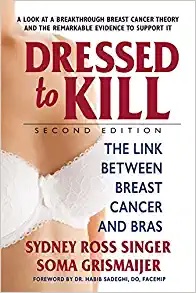 According to our 1991-93 US Bra and Breast Cancer Study, published in our book, Dressed to Kill: The Link Between Breast Cancer and Bras, the bra-cancer link is the major cause of breast cancer. This study concluded that bra-free women have about the same risk of breast cancer as men, while the tighter and longer the bra is worn the higher the risk rises, to 125 times higher for a 24/7 bra user compared to a bra-free woman.
According to our 1991-93 US Bra and Breast Cancer Study, published in our book, Dressed to Kill: The Link Between Breast Cancer and Bras, the bra-cancer link is the major cause of breast cancer. This study concluded that bra-free women have about the same risk of breast cancer as men, while the tighter and longer the bra is worn the higher the risk rises, to 125 times higher for a 24/7 bra user compared to a bra-free woman.
This was the world’s first study that looked directly at the bra-cancer link. A 1991 study from Harvard found pre-menopausal bra-free women had half the risk of breast cancer compared to bra users, but this finding was incidental to the main focus of the study, which was on breast size, handedness, and breast cancer incidence.
Since the release of Dressed to Kill in 1995, there have been dozens of other bra-cancer studies performed internationally that show a significant link. However, this issue is considered “controversial” due to its potential cultural and economic impact, similar to resistance to the tobacco-cancer link back in the mid-20th Century. Current opponents of the bra-cancer link include thought leaders such as the American Cancer Society and Susan G. Komen Foundation, which have publicly called the link scientifically implausible.
Figures Don’t Lie, but Liars Figure
Critics of the bra-cancer link refer to a 2014 study that was commissioned by the National Cancer Institute, which has been denying any possibility of a bra-cancer link since the release of Dressed to Kill. Due to public acceptance of the link, NCI felt it necessary to counter the studies showing a link by funding a study to oppose the link. This study was done at Fred Hutchinson Cancer Research Center, which raises money for breast cancer research through promoting “Bra Dash” events. The study was done on post-menopausal women only, and none of the women were bra-free, so there was no control group. The author of the study, who is a female graduate student who also wore bras, unsurprisingly found no bra-cancer link in her selected group of bra users.
This single, un-reproduced, flawed study has been used by the ACS and Komen Foundation, and others who follow them, as final proof of no bra-cancer link. While conflicting studies are typical of scientific research, this one study has been considered the first and last word on this issue by the cancer “experts” who deny the bra-cancer link. This study clearly serves the interests of the cancer detection and treatment industry, as well as the lingerie industry which fears class action lawsuits for the harms caused by bras.
Nevertheless, since that attempt to stop interest in the bra-cancer link in 2014, there have been many newer studies that show the link. And a recent trend in breast cancer research is asking about bra usage as a standard question, just like asking about family history. In fact, a recent study from Iran shows bra usage is a bigger factor in causing breast cancer than family history.
Culturally, bra usage has been questioned as a result of the #MeToo movement that has been challenging sexism and abuse in the workplace. Many women are now opting for being comfortable and bra-free at work, as well as in their everyday lives. Girls in high school are objecting to dress codes that require bras. And the general legal consensus is that women at work cannot be forced to wear sexualizing clothing, including high heels, short skirts, and bras. These trends are making it easier for the culture to accept the fact that bras are causing disease.
Perhaps the biggest impediment to this potentially lifesaving information is the resistance from the medical field, such as the ACS and others who follow their lead. We discuss in the 2018, updated, second edition of Dressed to Kill why we believe there is this resistance to this information, instead of a call for further research. Regardless of the reason, this unscientific, biased opposition to the bra-cancer link is a public health threat.
It is to combat this threat to health that we began the International Bra-Free Study in 2018. This study, which is free to join, is designed to create a cohort of bra-free women in order to see what happens to their breast health over time. While the study accepts women who have been bra-free for years, most of our participants have been bra users, allowing us to see what changes happen to their breasts and overall health once they stop using bras.
While this study is expected to help women avoid breast cancer and other breast disease associated with bra usage, the women in our study could also be available for other breast studies which require bra-free women. One big flaw in breast cancer and other breast disease research is that bra usage has been ignored as a factor. This is as scientifically flawed as ignoring smoking when doing lung disease research, which was the case prior to the acceptance of the tobacco-cancer link.
The 2014 Hutchinson study did not include any bra-free women as a control group, which that study admits is a flaw. They rationalize that flaw by saying that it was nearly impossible to find bra-free women for their study. Of course, you cannot do a valid breast cancer study looking at the bra-cancer link without including a control group of bra-free women for comparison. So instead of conducting poor breast cancer research without control groups, we hope to offer our study participants for possible inclusion in their future studies.
The response from the medical industry was swift after we announced our International Bra-Free Study. The American Council on Science and Health, a public relations firm that aims to dismiss and discredit all those who challenge the interests of the drug industry, published a hit piece against me and the study. Ironically, they claimed the study is flawed by not including a control group of bra users.
Nevertheless, despite the resistance by the medical industry over the years, many women have heard about the bra-cancer link and have stopped wearing bras. Many have joined the International Bra-Free Study. We expect that this group of women will have a lower incidence of breast cancer than the general public, which is our control group.
However, we have discovered something unexpected in the study. There have been some definite health changes following the elimination of bra usage, and while the study is ongoing, we felt it important to report these surprising findings.
Bras Constrict More Than the Lymphatics
First, we must explain that tight bras compress more than just the lymphatics. They also compress nerves and muscles. In fact, research has shown that wearing tight bras impairs the autonomic nervous system, leading to a host of problems.
For example, researchers have found that tight bras essentially create a full-body stress response. According to one study, “The main results can be summarized as follows: (1) urinary excretion of adrenaline, noradrenaline and cortisol was facilitated, and the amounts of urinary excretion were significantly higher when TC (tight clothing) were worn. Heart rate was significantly higher in the TC group; (2) nocturnal urinary melatonin excretion was significantly greater in the TC group. These results are discussed in terms of an enhancement of diurnal sympathetic nervous system activity caused by pressure on the skin produced by tight clothing.”
Another study of tight bras found that constipation is a result, presumably due to suppression of the parasympathetic nervous system and intestinal mobility.
Another study found that women who were bra-free had shorter menstrual cycles, averaging 30 days, compared to bra users, whose menstrual cycle averaged 45 days.
A study also found that tight clothing hampers breathing, reducing lung expansion, inhalation volume, and deep breathing.
Research has also shown that breasts lift and tone once the bra is no longer worn. The study author concluded, “Medically, physiologically, anatomically – breasts gain no benefit from being denied gravity. On the contrary, they get saggier with a bra.” While this scientific finding stands in contrast to bra-industry propaganda claiming that bras prevent droop, the science behind the bra-causes-droop effect is that reliance on the bra results in weakened suspensory ligaments and more droop. Once the bra is no longer worn, the ligaments strengthen and the breasts lift and tone. In addition. bras make the breasts heavy with excess fluid due to lymphatic impairment, resulting in more pendulous breasts.
Surprising Results of the International Bra-Free Study
I must admit that before we started the International Bra-Free Study in 2018, we thought we already knew what to expect when women stopped wearing bras. Since we first announced the results of our research in 1995, women have stopped wearing bras and have reported to us that their breast pain and cysts disappeared. In fact, this surprising recovery was rapid, within a month of no longer wearing bras. Many times, women felt a big improvement in pain and cysts within days of ending the bra-caused constriction of their breasts. Indeed, this tangible self-demonstration of the harm caused by bras has kept this issue alive despite denials of any ill effects from bras by the cancer industry.
But we had no idea how many other problems would improve by not wearing bras, until we started the International Bra-Free Study. While the study is ongoing, we feel that it is imperative that women learn how bras can interfere with their health, to take proper precautionary measures.
From the hundreds of women who are part of this study, with more joining daily, it has become clear that bras cause more than breast disease.
• Everyone has reported reduction of breast pain and cysts, if they had them before starting the study. In no case has breast pain or cysts worsened.
• Most report that their breasts are less saggy, and are rounder. Some report that their nipples now have more feeling than when they wore bras.
• Every woman reports that she breathes easier without a bra.
• Most women report that their digestion has improved.
• Women who had shoulder pain with a bra report loss of that pain once being bra-free.
• Many women report loss of headaches since being bra-free.
• Most women report having more confidence in public without a bra, and a greater sense of confidence and empowerment.
• Women in the study report they have no problem being bra-free at work, and appreciate the comfort.
• Most women report that they like their breasts more since being bra-free.
• Most report friends and family supporting their decision to be bra-free.
• Surprisingly, being bra-free does not seem to alter these women’s sex lives.
• Some women reported that their menstrual cycles became shorter and normalized after being bra-free.
• Importantly, not one participant has experienced any negative effects of being bra-free.
• We also found that once women freed themselves from bras, they began to free themselves from other oppressive aspects of their lives. As one participant explained, “I am more confident, I like my breasts now, and I want to advocate for girls and women to understand the link between bras and cancer and how easy, rewarding and healthful it can be to feel this comfortable. I am more empowered now, too.”
To Be Continued…
It should be clear that when you use a garment that compresses and constricts the lymphatic system and the autonomic nervous system, you are potentially altering the physiology of the breasts and of the entire body. Breast cancer may be the end disease for the breasts, but there will also be other disease conditions caused by tight bras, and other tight clothing, that can lead to nervous, hormonal, and circulatory problems.
When we first researched the bra-cancer link, we were surprised at how little research there was on the subject. Many people assume there can’t be a bra-cancer link, or they would have heard about it. People assume that the American Cancer Society would be warning women about bras if there was research that linked bra usage to cancer, just like the ACS finally got to warning people about smoking (after taking decades to finally accept the link.) But we are not just dealing with smoking. When we talk about bras, we are talking about breasts. And in our breast-obsessed culture, breasts are sexualized, objectified, molded, squeezed, sucked, compressed, constricted, pushed-up, tattooed, pierced, implanted, cut off, and framed in a lacy bra. It’s a cultural package that interferes with science and common sense. And even as doctors smoked cigarettes in the 1950s and promoted their use, doctors today wear bras and promote their use, oblivious to the obvious.
We are all victims of a bra-using culture. As a result, there is an epidemic of breast pain and cysts than affects more than half of women who use bras. Most of this is caused by the bra and improves rapidly once bra usage ends.
Some women will develop breast cancer as a result of a bra-constricted lymphatic system and exposure to cancer-causing chemicals, which consequently become concentrated in their breasts.
Radiation damage and other harmful impacts, such as trauma, to the breasts cannot be as effectively repaired when the lymphatics are constricted by bras. And the immune system cannot as effectively fight developing cancer cells without good lymphatic circulation.
Through the International Bra-Free Study, we have also seen confirmation of other research into the effects of tight clothing, including bras, on various bodily functions, due to impacts on the sympathetic and parasympathetic nervous systems. This means that women are suffering from constipation, shallow breathing, increased stress, menstrual abnormalities, and other possible problems because of their bras.
How tight is tight? If it leaves a mark in the skin, then it is too tight.
While the impact of bras on the autonomic nervous system has been known for decades, it has been largely ignored, along with research showing the other health hazards of bras. When a carcinogen is part of the fabric of the culture, it takes ripping the culture apart to remove it.
Denial is a much easier and profitable strategy for the industries that sell bras, and sell disease detection and treatment services.
We encourage women everywhere to join the International Bra-Free Study and see for themselves, on themselves, how chronic health problems that plagued them for years could be related to the cultural practice of wearing tight bras and other tight clothing. You have nothing to lose but your discomfort and chronic health problems, and this almost certainly will help you prevent breast cancer.
Join the International Bra-Free Study at https://brafreestudy.com
…………………
Some Studies That Support The Bra-Cancer Link
• 1991 Harvard study (CC Hsieh, D Trichopoulos (1991). Breast size, handedness and breast cancer risk. European Journal of Cancer and Clinical Oncology 27(2):131-135.). This study found that, “Premenopausal women who do not wear bras had half the risk of breast cancer compared with bra users…”
• 1991-93 U.S. Bra and Breast Cancer Study by Singer and Grismaijer, published in Dressed To Kill: The Link Between Breast Cancer and Bras (Second Edition, Square One Publishers, 2018). Found that bra-free women have about the same incidence of breast cancer as men. 24/7 bra wearing increases incidence over 100 times that of a brafree woman.
• Singer and Grismaijer did a follow-up study in Fiji, published in Get It Off! (ISCD Press, 2000). Found 24 case histories of breast cancer in a culture where half the women are bra-free. The women getting breast cancer were all wearing bras. Given women with the same genetics and diet and living in the same village, the ones getting breast disease were the ones wearing bras for work.
• A 2009 Chinese study (Zhang AQ, Xia JH, Wang Q, Li WP, Xu J, Chen ZY, Yang JM (2009). [Risk factors of breast cancer in women in Guangdong and the countermeasures]. In Chinese. Nan Fang Yi Ke Da Xue Xue Bao. 2009 Jul;29(7):1451-3.) found that NOT sleeping in a bra was protective against breast cancer, lowering the risk 60%.
• 2011 a study was published, in Spanish, confirming that bras are causing breast disease and cancer. It found that underwired and push-up bras are the most harmful, but any bra that leaves red marks or indentations may cause disease.
• 2015 – Comparative study of breast cancer risk factors at Kenyatta National Hospital and the Nairobi Hospital J. Afr. Cancer (2015) 7:41-46. This study found a significant bracancer link in pre-and post-menopausal women.
• 2016 – Wearing a Tight Bra for Many Hours a Day is Associated with Increased Risk of Breast Cancer Adv Oncol Res Treat 1: 105. This is the first epidemiological study to look at bra tightness and time worn, and found a significant bra-cancer link.
• 2016 – Brassiere wearing and breast cancer risk: A systematic review and metaanalysis World J Meta-Anal. Aug 26, 2015; 3(4): 193-205 This systematic review and meta-analysis aimed to evaluate the association between 8 areas of brassiere-wearing practices and the risk of breast cancer. Twelve case-control studies met inclusion criteria for review. The meta-analysis shows statistically significant findings to support the association between brassiere wearing during sleep and breast cancer risk.
• 2018 – Lymph stasis promotes tumor growth Journal of Dermatological Science “(t)hese findings come as no surprise to us who for a long time have been aware that alterations in regional lymphatic flow may produce dysregulation in skin immune function and consequent oncogenesis. In fact, since 2002, our team has held the view that lymphedematous areas are immunologically vulnerable sites for the development of neoplasms as well as infections and immune-mediated diseases. In recent years, increasing evidence has confirmed this assumption.”
…………………
Sunlight Holds Key To Killing Breast Cancer
By Sayer Ji
GreenMedInfo
January 1, 2015
A new study finds vitamin D — the ‘sunlight vitamin’ — strikes to the very heart of breast cancer malignancy.
Breast cancer is not what most people think. Beneath the intimidating statistics that make it seem like a juggernaut of inevitability or a time bomb of genetic determinism ready to go off in the asymptomatic breasts of millions of women, a far more complex conversation is occurring among clinicians and researchers concerning the true nature and causes of cancer, and why conventional therapies fail to turn the tide against the second highest cause of death in the Western world. To fully appreciate this, one must go to the first hand research itself.
For instance, a new study published in The Journal of Steroid Biochemistry and Molecular Biology identifies an overlooked root cause of breast cancer (cancer stem cells), as well as a natural intervention that has yet to be incorporated into the conventional standard of cancer care.
Titled, “Vitamin D compounds reduce mammosphere formation and decrease expression of putative stem cell markers in breast cancer,” the new study brings to the forefront the role of breast cancer stem cells (BSCs) in breast tumor formation and their progression towards malignancy and treatment resistance. For many decades it was assumed that cancer results from DNA-damaged cells succumbing to fundamentally chaotic processes, ‘going rogue’ and reproducing clonally (making identical copies of one another), without an acknowledgment of the different types of cells that comprise tumors. The most salient difference is between the cancer stem cells (sometimes referred to as ‘mother’ cells) which are capable of theoretically infinite self-renewal and produce all the differentiated ‘daughter’ cells in a tumor colony, which themselves are not capable of living indefinitely. It is actually the existence of the much smaller number of cancer stem cells which causes cancer recurrence, as they are not only resistant to conventional chemotherapy and radiation, but their numbers can actually be increased (enriched) by these two ‘therapies.’ Therefore, any cancer therapy that ignores the cancer stem cell subpopulation in favor of killing the non-tumorigenic daughter cells in order to ‘debulk’ the tumor (i.e. shrink it), will not result in destroying the root of the cancer. To the contrary, it can generate the illusion of ‘remission’ while in fact making the remaining tumor colony far more malignant, setting up the conditions for aggressive recurrence years later.
The new study focused on a type of breast tissue abnormality known as ductal carcinoma in situ (DCIS), which for decades was considered cancer (constituting about 20% of all breast cancer diagnoses), but recently has been identified as a benign lesion of epithelial origin. There are cases where DCIS progresses towards another breast abnormality known as invasive ductal carcinoma (IDC), which is considered a more serious risk. But even IDC cases may never progress to cause symptoms, nor ever cause harm to those within which it occurs. Nonetheless, the conventional medical system still considers a diagnosis of either DCIS or IDC justification for aggressive interventions, e.g. lumpectomy, mastectomy, radiotherapy and chemotherapy, indicating that if there is a natural intervention to decelerate the trajectory from DCIS to IDC, especially if it focuses on targeting and/or reducing the expression and growth of breast cancer stem cells, it is of great clinical relevance.
The new study sought to determine whether vitamin D3 and an analog known as BXL0124 are capable of inhibiting the progression of DCIS to IDC, and whether this effect is mediated through an influence on breast cancer stem cells (BCSCs). The study used a mammosphere cell culture system, which is a clump of mammary gland cells that includes breast cancer stem cells along with non-stem cell breast cells.
The researchers found that when the Vitamin D compounds were administered to the mammosphere culture it was observed to undergo a transition from a state of disorganization and irregularity in shape to a more organized and symmetrical shape similar to spheres formed by a non-malignant, normal mammary epithelial cell line. This cancer-defying effect of the vitamin D compounds was described in terms of a reduction in the so-called ‘mammosphere forming efficiency (MFE).” Moreover, treatment with vitamin D compounds was found to repress cell markers associated with stem cell-like phenotype (e.g. CD44, CD49f,c-Notch1, andpNFkB), as well as pluripotency markers (e.g. OCT4 and KLF-4), another property found within cancer stem cells.
The study concluded:
“Cancer progression, metastasis, and recurrence are significant problems in managing breast cancer. A significant body of evidence indicates that breast cancer stem cells drive these processes, complicating treatment strategies. A better understanding of how BCSCs drive breast cancer progression will aid in developing targeted therapies toward BCSCs. Our present study suggests a potential treatment strategy to reduce the putative BCSC population, and therefore enhance the effectiveness of breast cancer prevention and treatment through the use of vitamin D compounds.”
Regardless of whether DCIS or ICS really do represent a mortal threat to the health and lives of women, this study indicates that vitamin D targets the most malignant cell type found within breast cancer — the cancer stem cells — which is infinitely more selective an intervention than radiation and chemotherapy; nor does vitamin D have the profoundly damaging side effects of conventional cancer treatment.
Vitamin D, of course, is designed to be manufactured through the ultraviolet B-stimulated conversion of the cholesterol metabolite 7-dehydrocholesterol in the skin. The fact that in the modern era the breasts are never exposed to sunlight and that generally speaking adequate sunlight exposure (especially considering the over-use of vitamin-D blocking and carcinogenic petroleum-based sunscreens) is rare, it is likely that many of the variations in breast morphology increasingly being diagnosed through technologies like mammography as being ‘abnormal’ or ‘precancerous,’ directly reflect a deficiency of sunlight and Vitamin D. While the U.S. Preventive Task Force does not believe there is enough evidence supporting the benefit of vitamin D screening in routine practice, there is no harm in getting a blood test to determine one’s levels relative to the background population. And since vitamin D3 supplementation is affordable and extremely safe relative to commonly prescribed pharmaceuticals like Tamoxifen (a known carcinogen), it may provide those at risk for breast cancer or breast cancer recurrence with a reasonable alternative to watchful waiting and/or preventive chemotherapy.
For additional research on risk factors for breast cancer stem cell enrichment, as well as natural substances found to kill them, take a look at our database page on the topic: Breast Cancer Stem Cells, as well as the larger database section on Cancer Stem Cells in general.
……………………
Andrew Saul – High Dose Vitamin C Therapy For Major Diseases
“Vitamin C (ascorbate, ascorbic acid) has varying activity in the body at varying levels of intake. At low levels of consumption, vitamin C is like a trace nutrient: you need very little of it to stay alive, but without any at all you die. Even a few milligrams a day will suffice to preserve life. At moderate levels of consumption, say 500 to 1,500 mg per day for an adult, the vitamin works to build health in a positive sense. Statistically, fewer colds will be reported; incidence, severity and duration of influenza will be less. But it is at high levels, say 8,000 to 40,000 mg per day for an adult, that we begin to obtain therapeutic properties for the vitamin.
“At the proper (high) level, vitamin C has antihistamine, antitoxin, antibiotic, antipyretic (fever-lowering) and antiviral properties . . . QUANTITY, FREQUENCY and DURATION are the keys to effective orthomolecular use of vitamin C. So many people hold a philosophical viewpoint such as ‘I shouldn’t have to take so much of a vitamin.’ That’s certainly true; you do not have to . . . But what we are interested in is results. High doses of vitamin C get those results as well or better than any broad-spectrum drug on the market.
“The safety of vitamin C is extraordinary. There is not one case of vitamin C toxicity anywhere in the world’s medical literature. There is not one case of vitamin C-caused kidney stone ever proven, and I have been on the lookout for one for over 40 years. Indeed, vitamin C has been used to prevent and cure the formation of kidney stones since William J. McCormick, M.D. used it in 1946 . . . Daily doses of over 120,000 mg have been used with safety by medical doctors, and guinea pigs have been given the human daily dose equivalent of 500,000 mg without harm. The major side effect of vitamin C overload is an unmistakable several-times-an-hour loose stool. This, or excessive flatulence, indicates absolute saturation, and the daily dose is then dropped to the highest amount that will not bring about loose stool. That is a THERAPEUTIC level. Frederick R. Klenner, M.D. of North Carolina has seen cures of diphtheria, staph and strep infections, herpes, mumps, spinal meningitis, mononucleosis, shock, viral hepatitis, arthritis and polio using high doses of vitamin C. Dr. Klenner says: ‘Ascorbic acid is the safest and the most valuable substance available to the physician’ and ‘If you want results, use adequate ascorbic acid.’ ”
……………………
Study: Many Breast Tumors Will Spontaneously Regress
By Sayer Ji, Founder
GreenMedInfo
December 24, 2011
A groundbreaking study published in The Lancet Oncology shows for the first time that many screen-detected invasive breast tumors spontaneously regress when undiagnosed and untreated.
The study investigated the natural history of breast cancers detected in the Swedish mammography screening program between 1986 to 1990, involving 650,000 women.
Due to the fact that breast lesions and tumors like DCIS, and even so-called “invasive” breast cancers, are aggressively removed and/or treated before they can be determined with any certainty to be a clear and present threat to health, there has been little to no research on what happens when they are left alone, i.e. their natural history.
This study shows for the first time that women who received the most breast screenings had a higher 6-year cumulative incidence of invasive breast cancer than the control group who received far less.
The study concludes:
“Because the cumulative incidence among controls did not reach that of the screened group, we believe that many invasive breast cancers detected by repeated mammography screening do not persist to be detected by screening at the end of 6 years, suggesting that the natural course of many of the screen-detected invasive breast cancers is to spontaneously regress.”
Should we be so surprised? Given that breast cancer is not caused by a lack of breast screenings, surgery, radiation, and chemotherapy, it should not be so difficult to understand that the body, given an opportunity to heal itself, will do so. And what better way is there to promote healing than to AVOID unnecessary diagnostic and surgical procedures as well as chemical and radiation exposures?
This study adds to a growing body of clinical evidence showing that breast cancer is best treated by removing the cause, e.g. carcinogens, chronic stress, chemical and radiation exposures, food intolerances, etc., and utilizing immune-enhancing and nutritional/herbal therapies with a relatively low risk of toxicity vis-à-vis conventional oncology treatments. Once this strategy is employed bodily self-healing can be activated and many so-called “cancers” will remain benign or regress “spontaneously” without medical intervention.
…………………
When Cancer Spontaneously Disappears
By GreenMedInfo Research Group
December 4, 2020
Have you ever wished that someone’s cancer would magically disappear? For dozens, maybe hundreds of patients each year, this is exactly what happens. It’s called spontaneous regression, and it has medical science baffled.
While it may sound like a fairytale or, at best, a one-in-a-million anomaly, cases of spontaneous healing from cancer have been documented in the scientific literature for hundreds of years — with surprising frequency. In 2002, more than four articles were published on the subject in medical journals in an average month.
From the case of “St. Peregrine’s tumor” that disappeared in the 13th century to a recorded remission case in Paris in 1742, the phenomenon of spontaneous regression of cancer has long baffled doctors and, undoubtedly, delighted patients who, in many cases, went on to lead healthy lives without a recurrence of cancer.
While cases of spontaneous and complete healing from cancer are not always the norm, they have been accepted as medical fact. What no one can explain, not even the physicians who attended these miraculous cases, is how or why it happens.
The National Cancer Institute defines spontaneous regression from cancer as: a decrease in tumor size or extent of cancer in the body, without any apparent cause. Thanks to a modern medical system that prioritizes invasive surgical procedures and pharmaceutical interventions over understanding the body as a self-healing mechanism, science has cleared up none of the mystery in recent years.
The War on Cancer Is Failing
With $175 billion projected to be spent treating cancer in 2020, the failed war on cancer has spawned a successful industrial complex involving not just doctors and patients, but hospitals, governmental agencies, nonprofits, pharmaceutical companies and a host of other specialized service providers and equipment manufacturers. Despite this hyper-investment, researchers have concluded that today’s cancer patients have no better prognosis than patients treated 50 or more years ago.
Despite the grim and discouraging realities of allopathic medicine’s approach to cancer treatment, there are numerous examples of cancer making an abrupt about-face and retreating, without conventional interventions.
What follows are several recent cases of spontaneous cancer regression that stimulate intrigue and inspire questions regarding why and how they occurred. Perhaps more importantly, such cases also serve as inspirational examples of what’s possible when your body’s powerful self-healing mechanisms are triggered.
Can Faith Heal Cancer?
A case of spontaneous healing was published in 2014 in Oxford’s Quarterly Journal of Medicine,[vii] detailing a previously healthy 74-year-old Irish woman who was referred to a dermatologist for treatment of a rash on her lower leg that had persisted for three months. Weeping wounds and discoloration of the skin between the knee and the ankle were determined through biopsy to be squamous cell carcinoma, a form of skin cancer.
Treatment options discussed with the patient by the primary care team included above knee amputation, radiation therapy and systemic chemotherapy, none of which were desired by the patient.
At a 12-week follow-up appointment, doctors observed a clinical reduction in the number and size of lesions on the woman’s leg. At 20 weeks after initial presentation, all the lesions on her leg had resolved and there was no cancer detected on PET scans of her leg or elsewhere in the body. The patient returned every six months, and after 18 months the patient remained disease-free.
While the hospital care team was unable to explain the cancer’s sudden and complete reversal, Alan Irvine, the patient’s doctor at St James’ Hospital, Dublin, said that his patient did not require a medical explanation. She attributed her miraculous healing to God’s grace, and the simple act of kissing a religious relic in a moment of faith and devotion.
Is Injury a Stimulus to Self-Healing?
A 2019 research paper from the Department of Radiology at Shiga Medical Center Research Institute in Japan, describes a case of spontaneous regression of T-cell lymphoma in a 74-year old man who presented with persistent abdominal pain.
Enhanced CT scan revealed multiple low-density lesions in the liver and spleen area and blood tests indicated the presence of malignant lymphoma. A whole-body PET/CT scan further revealed bone lesions; subsequent surgical biopsies of two liver tumors confirmed the diagnosis of hepatosplenic T-cell lymphoma.
One and a half months after biopsy, the patient presented at the hospital for a PET/CT scan prior to beginning chemotherapy. The scan showed the complete disappearance of all lesions. With no lesions to treat and new bloodwork showing normal levels, the patient was released without any active treatment.
Doctors involved in treating the patient had no explanation for the spontaneous regression other than to hypothesize that the excisional biopsy could have been a “triggering trauma” that stimulated the self-healing mechanism. This asserts that the patient’s immune response to the relatively minor trauma of a surgical biopsy may have been the cause of this spontaneous cancer regression.
Can Natural Supplements Incite Spontaneous Cancer Regression?
A 2020 case report presents an incidence of spontaneous regression in a patient with an invasive tumor on the base of the skull called a clival chordoma. Chordomas are potentially life-threatening tumors that are typically removed surgically, then treated with focused radiation.
At the time of diagnosis, the patient’s scans revealed two masses centered in the nasopharynx measuring nearly 9 centimeters in circumference. Pre-operative imaging taken two months later showed that the mass had spontaneously regressed by nearly 62%, to a total size of just over 3 centimeters. The patient had undertaken no therapies in the interim between diagnosis and preparation for the surgical procedure.
Due to the significant reversal of the tumor, surgery was no longer indicated, leaving doctors to speculate as to whether natural food-based supplements could have been responsible for this patient’s “miraculous” spontaneous regression. The patient had been taking a regimen of herbal and oil supplements that were available in health food stores.
Cancer Reversal: A ‘Phenomenal’ Immune System Response?
This case centers on a confirmed diagnosis of breast cancer after a routine mammogrram. Biopsy results identified an invasive carcinoma in the left breast of a 72-year old female patient with Type 2 diabetes and high blood pressure. The procedure, performed by core needle extraction, further showed that the dense breast tumor had already been subjected to a robust natural immune response by the presence of activated cytotoxic T-cells in the tumor area.
The patient’s cancer treatment began with diagnostic biopsies on day 27 after initially presenting to the medical team. These biopsies confirmed cancer and a rapidly growing axillary metastasis in the left-side lymph nodes. On day 83, less than two months after the initial cancer diagnosis, the patient presented for removal of the tumor and affected lymph tissue.
After the procedure was performed, specimen mammography showed that the lesion and surrounding critical area were successfully removed. What surprised doctors was the fact that the 82-gram mass showed no residual cancer and no lymph node metastases were detected at this time. Repeated breast imaging was performed on day 131, showing no signs of residual disease of the breast.
The case was labelled a spontaneous regression of a high-grade, triple-negative breast cancer with axillary metastasis, something that the authors called “a surprising phenomenon.” The patient had undergone no changes in diet or medication routine throughout (https://ringandfitness.com/meds/modafinil-provigil/) the entire treatment period and professed to no alterations in these habits for many years prior to diagnosis of cancer.
Histological samples of the tumor showed that the patient’s innate immune system response to cancer had been aggressive, with virtually every tumor cell coming into direct physical contact with anticancer lymphocytes. The medical team had no definitive explanation to offer for the cancer’s spontaneous regression, but suggest that tumor-infiltrating lymphocytes may be responsible for spontaneously overcoming the cancerous growth.
Programmed for Health or Disease?
A study published in 2020 reviewed the biological and clinical features of 20 instances of spontaneous regression of chronic lymphocytic leukemia (CLL).[xii] The multidisciplinary team of researchers from the UK described spontaneous regression as “a recognized phenomenon in CLL” but admitted that “its biological basis remains unknown.”
The review identified that all spontaneously regressed tumors displayed a genetic profile characterized by down-regulation of certain metabolic processes, including the MYC gene associated with the formation of cancer, as compared to non-regressing CLL.
Additionally, spontaneous regression was associated with reversal of “T-cell exhaustion features,” including reduced apoptosis, or cellular death, and increased T-cell proliferation. Far from uncovering the magic bullet for spontaneous regression, the thorough review produced little more than novel insight into the phenomenon.
The research team concluded that spontaneously regressing cases of CLL “appear to undergo a period of proliferation before entering a more quiescent state, and that a complex interaction between genomic alterations and the microenvironment determines disease course.” In plain speak, they merely observed that in these cases, the cancer initially proliferates, then regresses, and the causes and the processes of recovery are highly individualized to each patient.
Can Cancer Simply Fade Away?
In January 2020, a case report of spontaneous regression of lung cancer was published in the peer-reviewed Cureus Journal of Medical Science.[xiii] Authors noted that cases of spontaneous regression are rare for non-small cell lung cancer, contributing to a poor understanding of the phenomenon, however it is of great interest to patients and providers.
To better understand the pathogenesis of spontaneous regression, the authors presented their experiences with a 73-year-old man who regressed without treatment. The Caucasian male patient was a long-term smoker with a history of low grade, non-invasive bladder cancer that had been recently treated. Symptoms included shortness of breath and difficulty breathing when exerting.
A CT scan of the chest revealed a solid mass in the left lower lobe of the lung. A PET scan taken three weeks later confirmed a solid nodule consistent with primary lung cancer, with no evidence of metastatic disease. Subsequent fine-needle aspiration confirmed squamous cell carcinoma.
The patient was evaluated for surgical lung resection and radiation therapies, but transportation issues prevented the patient from making medical appointments.
At a 10-week post-biopsy appointment, scans showed a marked decrease in the size of the lung mass. The patient, in consultation with the medical team, decided to postpone further treatment until a three-month follow-up imaging session was conducted. After 12 weeks, the patient’s CT scan revealed further reduction in the size of the lung mass, now half its original size.
Reasonably, the patient continued to delay medical interventions considering the promising healing trend. Two additional scans were performed at three-month intervals, followed by a six-month scan, all of which showed continued diminution of the mass, with no evidence of active disease. Further blood tests supported the findings of spontaneous and complete cancer regression.
To learn more about spontaneous tumor regression, you can access more than three dozen research abstracts on GreenMedInfo.com.
See also:
• Near-Death Experiences & Miraculous Healings
• Radical Remissions, Mind Over Matter, The Power Of Placebos
• Spontaneous Remission: An Annotated Bibliography (pdf download)
……………………
Is Cancer An Ancient Survival Program Unmasked?
By Sayer Ji
GreenMedInfo
February 13, 2012
Ever since Richard Nixon declared a war on cancer in 1971 through the signing of the National Cancer Act,[i] over a hundred billion dollars has been spent by our government on research and drug development in an attempt to eradicate the disease, with trillions more spent by the cancer patients themselves, but with disappointing results.
Even after four decades of waging full-scale conventional (surgery and chemo) and nuclear (radiotherapy) war against cancer, close to one in every four Americans will be diagnosed with the disease within their lifetimes. Could this colossal failure reflect how profoundly misunderstood the condition is, and misguided are our attempts to prevent and treat it?
The time has come to shift the conceptual framework away from the idea that cancer is something bad that happens to the body, to something the body does in order to survive vis-à-vis an increasingly toxic and nutrient-deprived environment. Only then we will begin to unravel the mystery behind the colossal failure of the conventional medical system and why the ‘war against cancer’ will only be successful when we embrace our enemy with greater compassion and understanding, instead of blasting it (and ourselves) into oblivion.
For the past half century, the “Mutational Theory” has provided the prevailing explanation for the cause of most cancers, where, as the story goes, accumulated mutations to the DNA within the nucleus of our cells lead some to “go berserk,” their “insane” behavior a result of multiple destructive events to the intelligent code within the cell (DNA) that keep them acting in a ‘civilized’ manner relative to the larger bodily whole.
In this view, these rogue cells clone themselves inordinately, spreading outward in a characteristically cancerous manner (cancer = Greek for “crab”), not unlike the characteristics of an infectious process within the host, eventually obstructing vital processes, resulting in morbidity and death. One paper summarizes this view as follows:
1. Cancer is derived from a single somatic cell that has accumulated multiple DNA mutations.
2. The default state of cell proliferation in metazoan (animal life) is quiescence
3. Cancer is a disease of cell proliferation caused by mutations in genes that control proliferation and the cell cycle.
The problem with this view is that over 100 cancer-promoting genes (oncogenes) have already been discovered nested deep within our genome – hardly a byproduct of chance mutation within individual cells. Proliferation may very well be the default state of all cells, and much of the behavior of healthy, well-differentiated cells in higher animals is a regulatory overlay (suppressing ancient genes) on top of a far more ancient program which becomes unmasked during carcinogenesis.
Cancer, therefore, may be an “evolutionary throwback” to a time before we became multicellular organisms and a more rudimentary type of cooperation between cells existed (i.e. tumor) which enabled them to survive in a dramatically different, and perhaps far harsher environment.
Cancer cells are, in fact, surprisingly well-coordinated for cells that are supposed to be the result of strictly random mutation. They are capable of building their own blood supply (angiogenesis), are able to defend themselves by silencing cancer-suppression genes, secreting corrosive enzymes to move freely throughout the body, alter their metabolism to live in low oxygen and acidic environments, and know how to remove their own surface-receptor proteins to escape detection by white blood cells.
These complex behaviors, which involve the type of cooperation between cells which is the very definition of Metazoan behavior (multicellularity, i.e. animal life), call into question the view that mutation within ‘rogue cells’ is the primary cause of cancer. What if cancer was the unmasking of a more ancient survival program within the cell, activated as a last ditch effort to survive an increasingly hostile bodily environment, saturated through with carcinogenic and immunotoxic agents?
There is plenty of evidence to support this view. For instance, in the pre-Metazoan era, at the base of the “Tree of Life,” programmed cell death (apoptosis) – a form of cell suicide — which is necessary to produce highly differentiated tissues within complex multicellular organisms, had not yet developed; especially since just surviving the harsh environment would have favored selecting for traits that resisted cell death, i.e. immortalization, as is characteristic of cancer cells. The inability of cancer cells to undergo apoptosis indicates that the cell is drawing from a genetic toolkit associated with a more ancient cellular incarnation….
In other words, cancer is not some predestined gene-time bomb setting itself off within us, rather, is the logical result of decades worth of cell shock/damage/adaptation to environmental poisoning, nutrient deprivation and psycho-spiritual and/or emotional stress? These cells have learned to survive the constant abuse, and have flipped into survival mode, which is self-centered, hyper-proliferative (constant self-repair/replication) and aggressive (metastatic).
Instead of a monolithic “disease,” it makes more sense to view cancer as a symptom of a bodily milieu gone awry; in other words, the environment of the cell has become inhospitable to normal cell function, and in order to survive, the cell undergoes profound genetic changes associated with the cancerous personality ( phenotype).
This “ecological” view puts the center of focus back on the preventable and treatable causes of the “disease,” rather on some vague and out-dated concept of “defective genes” beyond our ability influence directly. It also explains how the “disease” process may conceal an inherent logic, if not also healing impulse, insofar as it is an attempt of the body to find balance and survive in inherently unbalanced and dangerous conditions.
New findings published in the journal Physical Biology support this new way of looking at cancer:
The genes of cellular cooperation that evolved with multicellularity about a billion years ago are the same genes that malfunction to cause cancer. We hypothesize that cancer is an atavistic condition that occurs when genetic or epigenetic malfunction unlocks an ancient ‘toolkit’ of pre-existing adaptations, re-establishing the dominance of an earlier layer of genes that controlled loose-knit colonies of only partially differentiated cells, similar to tumors. The existence of such a toolkit implies that the progress of the neoplasm in the host organism differs distinctively from normal Darwinian evolution.
The reference here to “Darwinian” evolution is another way of talking about the Mutation Theory of cancer. If cancer is a byproduct of a series of random mutations that “naturally select” for a strong cancerous phenotype, there would be no “cancer toolkit” already embedded deep within the cell’s ancestral genetic code. Rather than view cancer as “begun anew” in each case, a byproduct of natural selection or ‘internal Darwinism,’ a more likely explanation is that it is unmasked each and every time the genetic damage and epigenetic alterations to the cell get bad enough to compel the cell to access ancestral genetic survival programs, and as a result “go medieval” on the body.
In other words, carcinogenesis is here seen as a process of de-speciation, a radical lack of differentiation back towards the ancestral proto-cell. If this is true, given the right (or wrong) conditions, normal cells may regress to a more primitive, far more individualistic cell phenotype in an attempt to survive (if not thrive) within the biochemical/bioenergetic adversities characteristic of the sickened, cancer-prone body.
This new view may shed light on why chemotherapy and radiotherapy have such dismal track records. Tumors often contain a mixture of both highly malignant and benign cell populations. The treatment may destroy the benign cells, releasing the “chemoresistant” and “radioresistant” populations to wreak havoc on the body of the patient.
Often treatment failure is attributed to the “treatment resistant” nature of the cancer, when it is a direct result of the inherent toxicity and lack of effectiveness of the therapy being used. In the same way that antibiotics like methicilin have spawned “super germs” like MRSA (Methicillin-Resistant Staphylococcus Aureus), conventional cancer treatment is often responsible for generating greater resistance and subsequent malignancy within certain tumor populations.
If the transformation of a healthy cell into a cancerous one is caused by acute and chronic exposures to xenobiotic chemicals, as well as nutrient deficiencies, the use of many conventional anti-cancer drugs actually ads fuel on the fire, forcing those cells to regress further back into their ancestral genetic tool-kits for the means to survive the onslaught. Do we blame the cells for responding in this manner, or do we acknowledge the failure of conventional treatment methods?
……………………
Recommended Doctors & Centers
• LifeWorks Wellness Center
• Hope4Cancer
• Dr. Nasha Winters
• Best Answer for Cancer Foundation
• The ChemoThermia Oncology Center in Turkey
• Integrative Cancer Answers
• Dr. Hulda Clark Information Center
• Andrew Saul’s DoctorYourself.com
…………………
Additional Holistic Treatment Articles & Resources
• Cancer Care: The Role of Repurposed Drugs and Metabolic Interventions in Treating Cancer by Dr. Paul Marik
• Healing Strong Support Groups
• GreenMedInfo: Breast Cancer Research
• Vitamin C & D Resource Page (Sunfellow)
• IV Vitamin C Resource Page
• Over 250 Published Studies Documenting the Validity of IVC as a Adjunctive Cancer Care Modality (pdf)
• High Dose Intravenous Vitamin C (IVC) (CancerTutor)
• Vitamin C & D Resource Page
• High Dose Vitamin C + Mistletoe Therapy
• The Wim Hof Method (Breathing & Cold Water Therapy)
• Intermitten Fasting (Mercola)
• 12 Natural Cancer Treatments Revealed (Dr. Axe)
• Dr. Axe On Cancer (Dr. Axe)
• What Causes Cancer? Here Are 11 Unexpected Things (Dr. Axe)
• Researchers Identify 300+ Chemicals as Potential Risk Factors for Breast Cancer
• ‘Hidden Dangers’ Of Mammograms Every Woman Should Know About (Sayer Ji, 03/02/23)
• Earthing
• Grounding
• NDEs On The Importance Of Plants, Animals, And The Earth
• Green Spaces Aren’t Just For Nature – They Boost Our Mental Health Too
• Surrounding Yourself With This One Thing Can Add Years To Your Life
• Blue Spaces: Why Time Spent Near Water Is The Secret Of Happiness
• Oliver Sacks: The Healing Power of Gardens
…………………
32 Ways To OutSmart Cancer: Create A Body In Which Cancer Cannot Thrive
By Dr. Nalini Chilkov
Amazon Description:
32 Ways To OutSmart Cancer, Create A Body In Which Cancer Cannot Thrive, is the definitive step-by-step roadmap to a cancer-free life. Get access to the same time tested recommendations Dr. Chilkov has made available to her exclusive celebrity patients for over 30 years. This transformational guide is for people living with and recovering from cancer and those who do not want to get cancer in the first place. Learn how to turn on your cancer fighting genes so that you can live long and live well!
• Integrative Cancer Answers
• How To Outsmart Cancer With Dr. Nalini Chilkov
…………………
Breast Cancer Deception
By Mike Adams
Table of Contents:
1. The Deception
2. Controlling Women
3. World Medicine
4. Censored Solutions
5. Pinkwashing
6. Planned Censorship
7. Cancer Solutions
8. Ignoring What Works
9. Exploiting black women
10. Medical Enslavement
11. Enslaving Black Men
12. Cancer Dogma
13. Breast Cancer Propaganda
14. Breast Cancer Solutions
15. Beating Cancer
…………………
14. Breast Cancer Solutions
18 things that CAUSE cancer:
(in no particular order)
• Smoking cigarettes
• Mammography radiation
• Chemotherapy and radiation
• Perfumes and fragrance products
• Cosmetics and personal care products
• Drinking non-organic milk or eating non-organic dairy products
• Hydrogenated oils and trans fatty acids
• Home cleaning products, including laundry detergent, dryer sheets, etc.
• Plastic food containers – includes plastic lining inside food cans
• Sodium nitrite – found in most processed meats, see articles on sodium nitrite
• Pesticides, PCBs, chlorine and other chemicals
• Acrylamides (formed during high-heat food processing such as frying)
• Watching television / lack of exercise
• Severe emotional distress or relationship stress
• Refined sugars / refined grains
• Dry cleaning chemicals
• Hair color chemicals
• Nail polish remover
22 things that PREVENT cancer:
• Vitamin D and sunshine
• Anti-cancer foods
• Green tea
• Broccoli and cruciferous vegetables
• Medicinal mushrooms – reishi, shiitake, agaricus blazei, etc.
• Lycopene and tomatoes
• Infra-red saunas and sweat lodges – because sweating expels toxins
• Chlorella
• Pomegranate seeds
• Omega-3 oils / chia seeds
• Rainforest herbs
• Juice detoxification
• Acupuncture – helps move blood and chi (body’s energy)
• Sprouts – ALL sprouts are anti-cancer.
• Red clover – Helps cleanse the blood. Find from any supplement maker.
• Deep breathing / oxygenation / stress reduction
• Yoga, Tai Chi or Pilates – These all boost lymph circulation
• Cacao – (real chocolate)
• Therapeutic massage – helps move lymph, boost circulation
• Mint – grow your own (the easiest plant to grow)
• Apricot pits / laetrile / vitamin B17
• Blackberries – Most berries contain some form of anti-cancer medicine
…………………
General Health Guidelines From Near-Death Experiencers
 “People who have had NDEs tend to be especially sensitive to their physical environment after they return. They are less able to tolerate anything that is inconsistent with the intensely vital, life-giving energy of the other realm. Thus, they have more adverse reactions to pharmaceuticals, other drugs, and alcohol than previously. Many avoid foods that contain chemicals or artificial sweeteners and prefer organic foods instead. Some become vegetarians. They seek out nature and fresh air. This sensitivity extends to sounds. Many NDEs include music, and NDErs typically feel drawn to music that resonates with their experience. They prefer natural, gentle, melodious sounds and take more pleasure than before in classical or soothing music. They dislike loud, jarring noise.”
“People who have had NDEs tend to be especially sensitive to their physical environment after they return. They are less able to tolerate anything that is inconsistent with the intensely vital, life-giving energy of the other realm. Thus, they have more adverse reactions to pharmaceuticals, other drugs, and alcohol than previously. Many avoid foods that contain chemicals or artificial sweeteners and prefer organic foods instead. Some become vegetarians. They seek out nature and fresh air. This sensitivity extends to sounds. Many NDEs include music, and NDErs typically feel drawn to music that resonates with their experience. They prefer natural, gentle, melodious sounds and take more pleasure than before in classical or soothing music. They dislike loud, jarring noise.”
“When NDErs return, they tend to gravitate toward whatever is most consistent with physical wholeness, and they usually treat their bodies with greater love and care. For example, they are attracted to alternative medicine, perhaps because it tries to help the body remember its innate wisdom and balance by working with the body’s energy systems, rather than by manipulating the body with drugs. Perhaps this shift is a reflection of a change in the energetic frequency of the NDEr, who has returned from an immersion in the highest frequencies of the universe. The person will then be drawn toward what matches that higher frequency. Alternative medicine may be a better match because it emphasizes energetic (or frequency-based) methods of healing… Thus, when NDErs try to avoid chemicals in the form of pharmaceuticals, perhaps they are simply seeking out what best matches them and avoiding what does not.
“Similarly, non-organic food has usually been treated with chemicals that are alien to and unrecognizable by the body. These chemicals degrade the food’s natural energy, whereas whole organic foods retain more of the energy of life. Since we are made of energy in the form of light, our bodies know the difference. NDErs may be more consciously aware of and sensitive to the energy in substances such as food, since they are likely more aware of the energy in the form of light that constitutes themselves and all things. Thus, NDErs may change their diet. They may also make other changes, such as giving up smoking or drinking, exercising more, and living as close to the earth as possible.”
— The Gifts of Near-Death Experiences: You Don’t Have to Die to Experience Your True Home, by Sheila Fabricant Linn, Dennis Linn, Matthew Linn
……………….
See Also:
Sunfellow Health & Healing Resource Page
……………….

